


CAPSTONE DESIGN SHOWCASE 2022
-
DAYS
-
HOURS
-
MINUTES
-
SECONDS
COMING SOON





COMING SOON




Team members
Aaron Soares (ASD), Ariyana Tiara Arnold (ASD), Jane Phua Wen En (ASD), Wong Siong Min (ASD), Liew Iris (EPD), Ng Jiaxing Aaron (EPD), Ong Lok Hen (ESD)
Instructors:
Michael Reeves, Low Hong Yee, Francisco Benita
Writing Instructors:
Teaching Assistant:
Though mental health awareness is widespread, the request for treatment for mental health disorders is trailing behind. Individuals who are aware of their need to seek help for their mental health are not requesting for treatment, creating a gap. This gap is prominent especially amongst youth due to preconceived notions of mental health treatment and the stigma that is associated with seeking professional help.
This project thus aimed to design a pavilion that directly targeted the issue of stigma surrounding mental health. Through deliberate consideration of a user’s journey, the experience in the pavilion helps empower users and lets them know that they are not alone, and that getting help can be simple and not demeaning. As a result, we hope to reduce the resistance to treatment, and encourage individuals to be willing to reach out.


is a pavilion that pays tribute to the struggles surrounding mental health, and the courage to take a step towards seeking help. Through the pavilion, we hope to check-in on users' mental health and encourage them to seek help if needed. Overall, we also remind them to take care of their mental wellness.
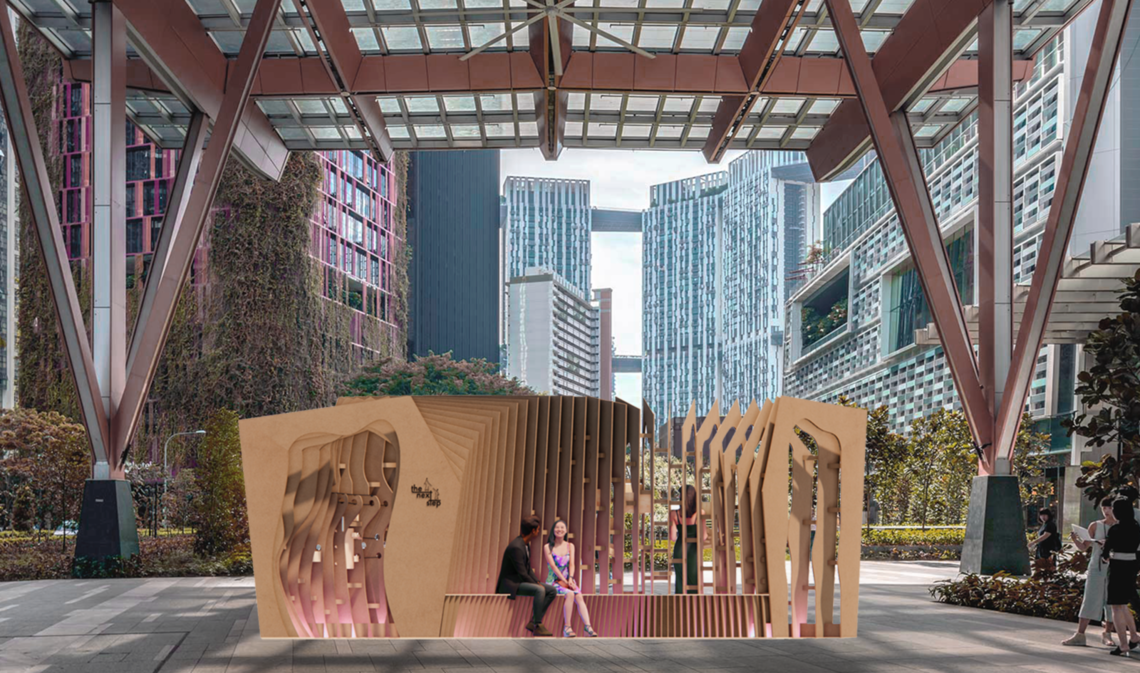

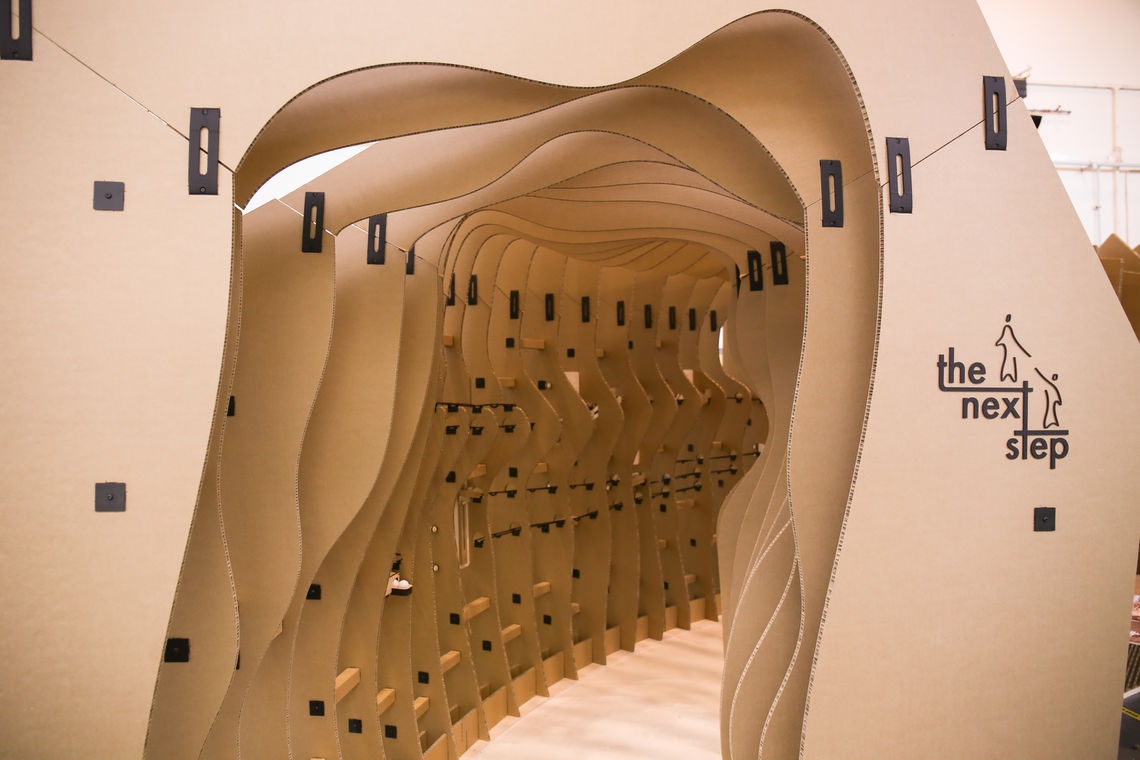
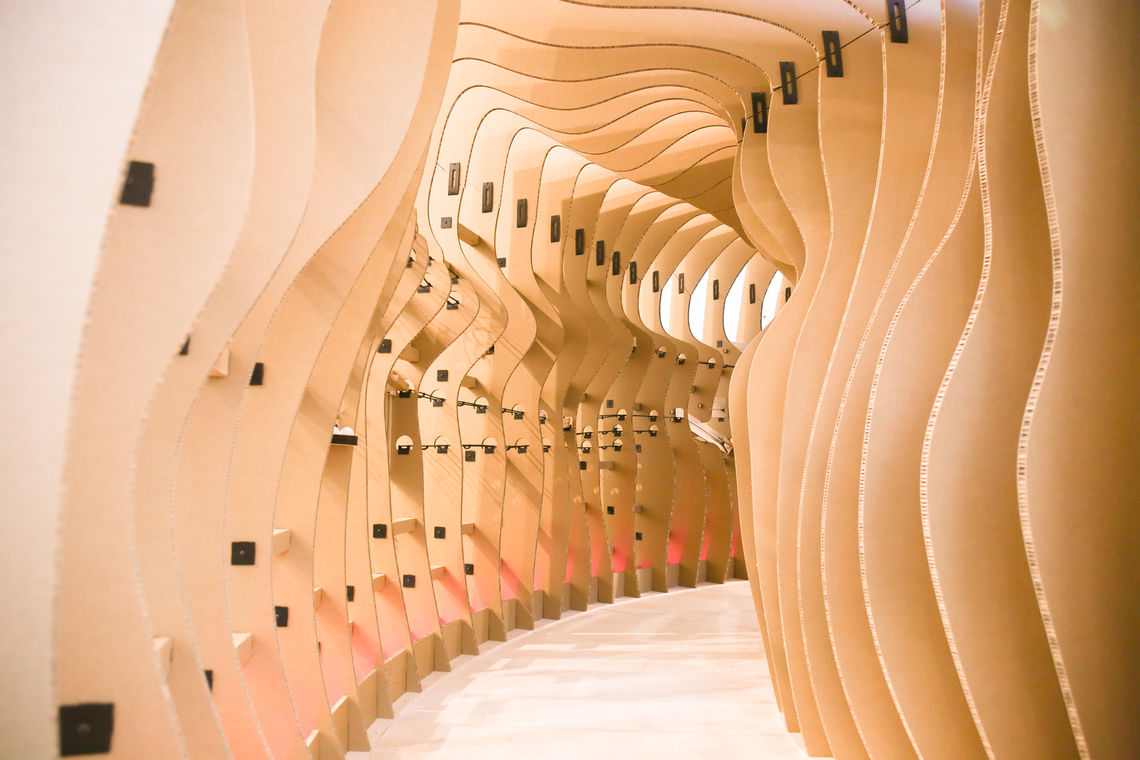
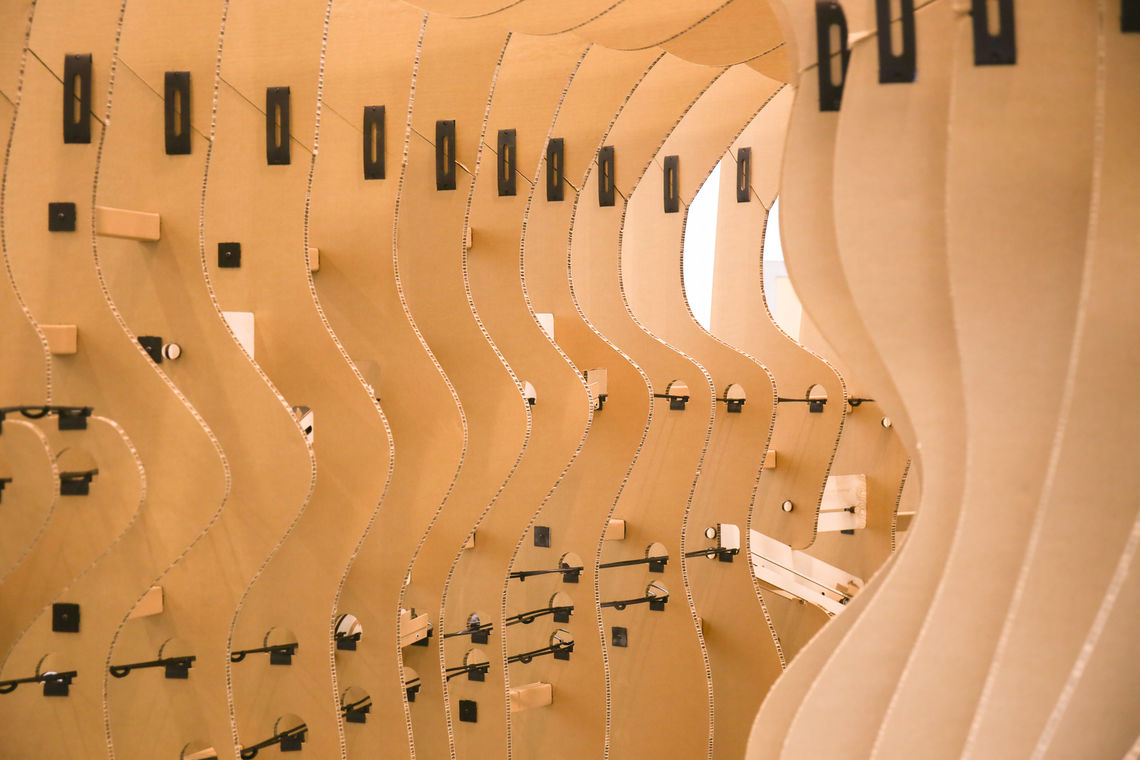


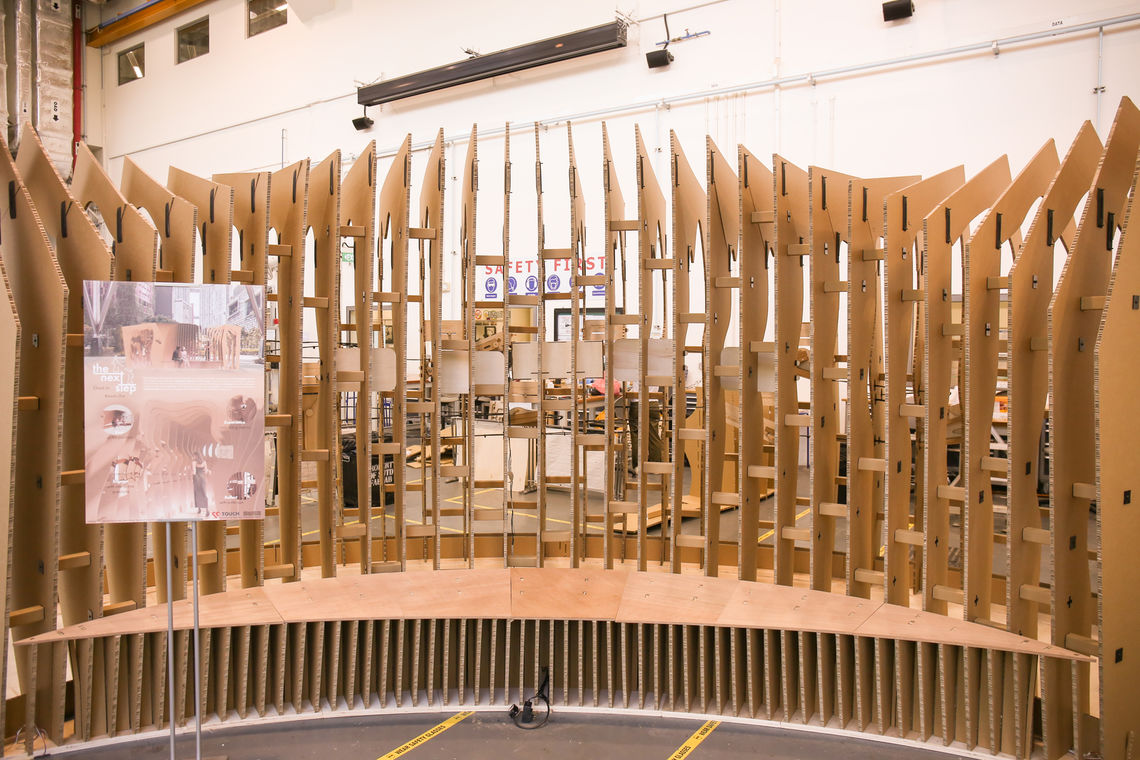
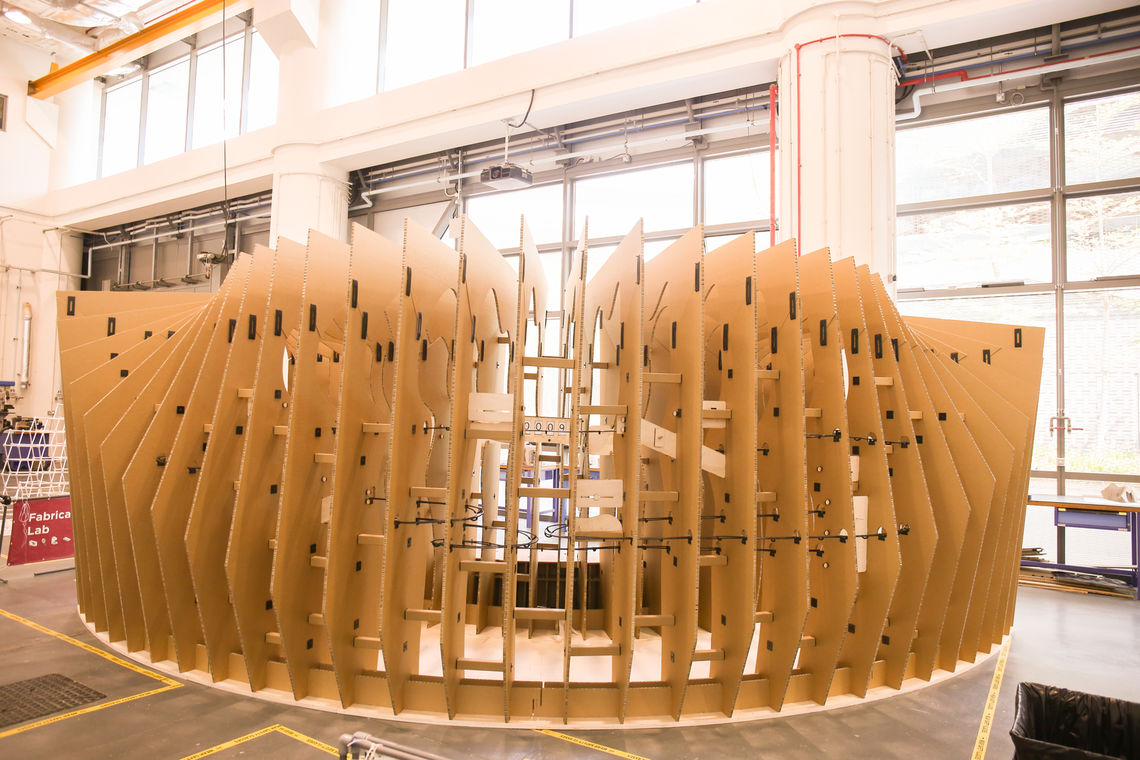
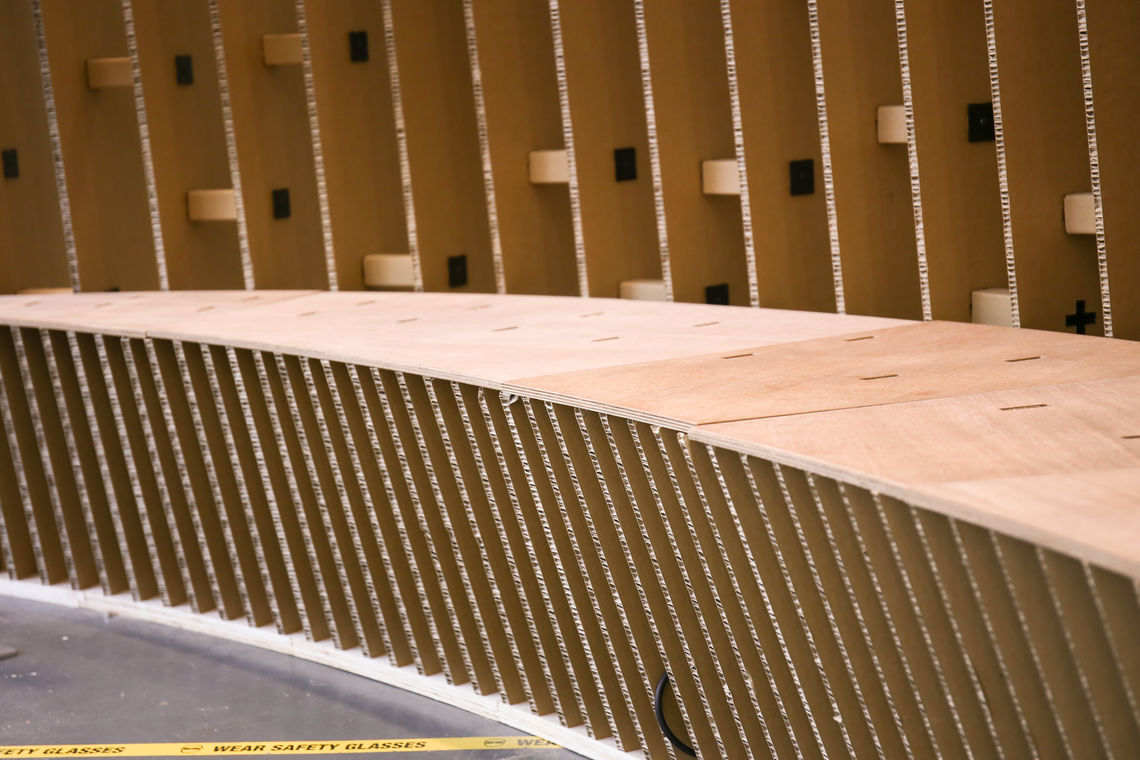

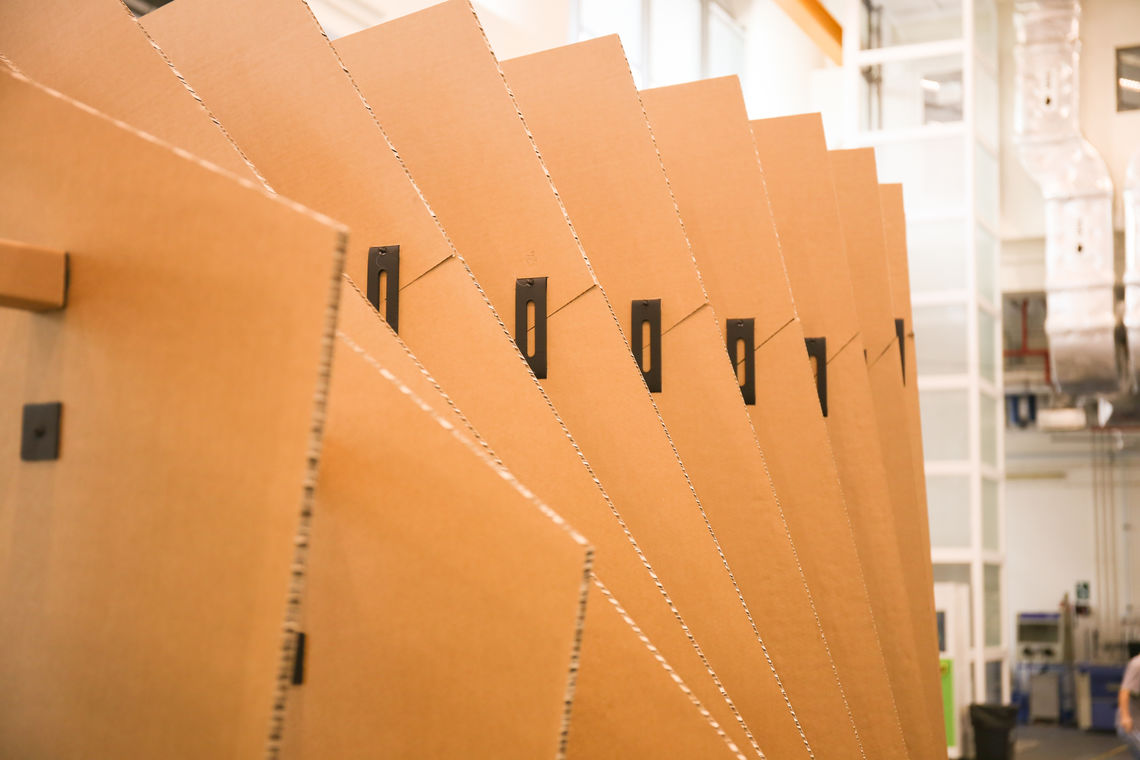
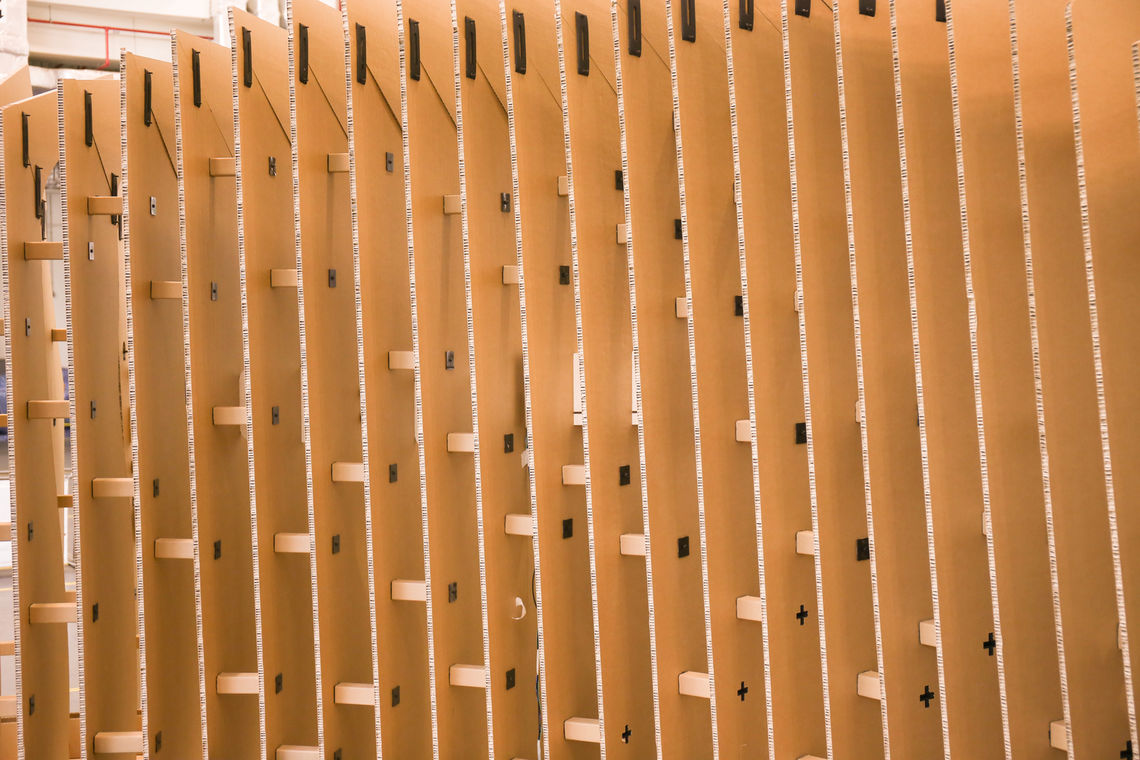
Designed as a rest spot, the pavilion naturally attracts users by providing a resting space where they can relax and spare the time to explore. The structure was designed with two main guiding concepts - to pique curiosity in users by introducing unexpected spaces, and use visibility as a tool to create public and private spaces.
Degree of Unexpectedness
A geometric exterior form attracts the attention of passersby to enter the pavilion and experience the organic interior space. This contrast is unexpected and the undulating interior draws the users to want to further explore the pavilion as well as create moments of surprise as users walk through our space through bends and nudges.
Public and Private Spaces
Visibility into our structure is skewed and where you can see into the pavilion depends on the angle of view. This is carried through from one of our first few intentions of creating privacy.

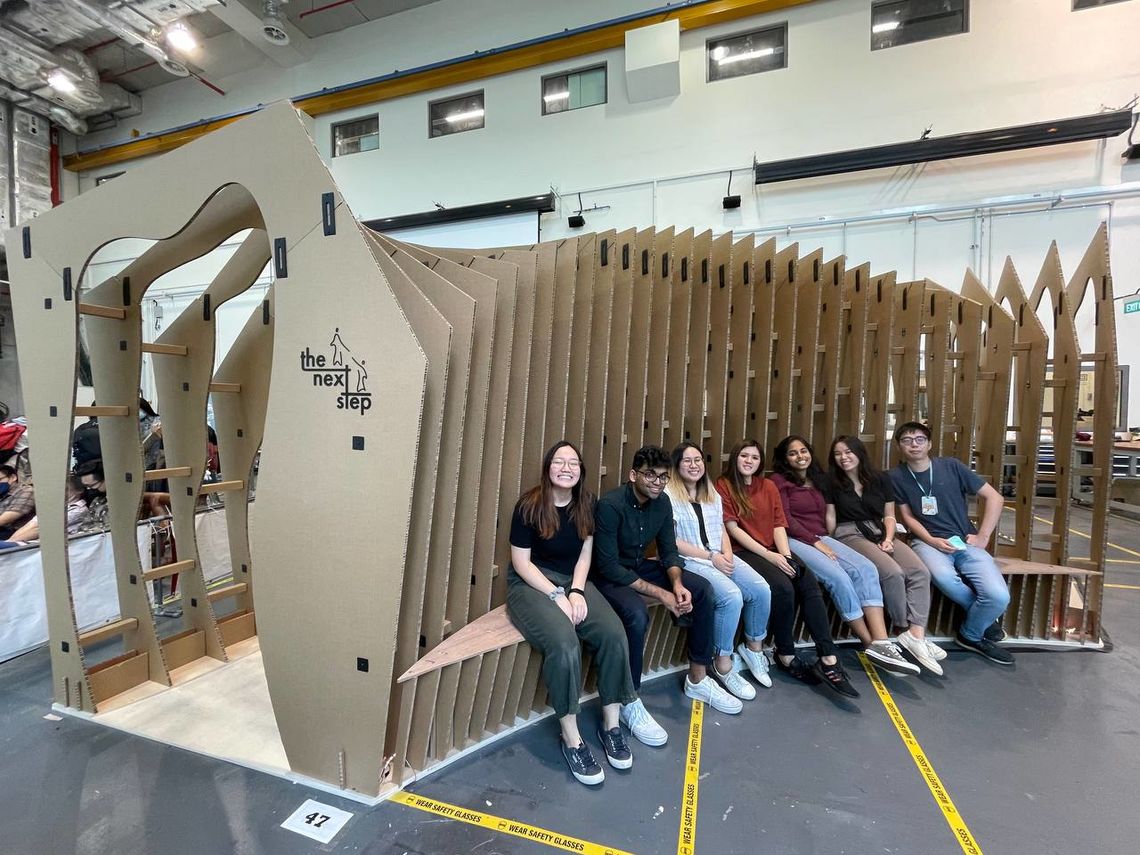
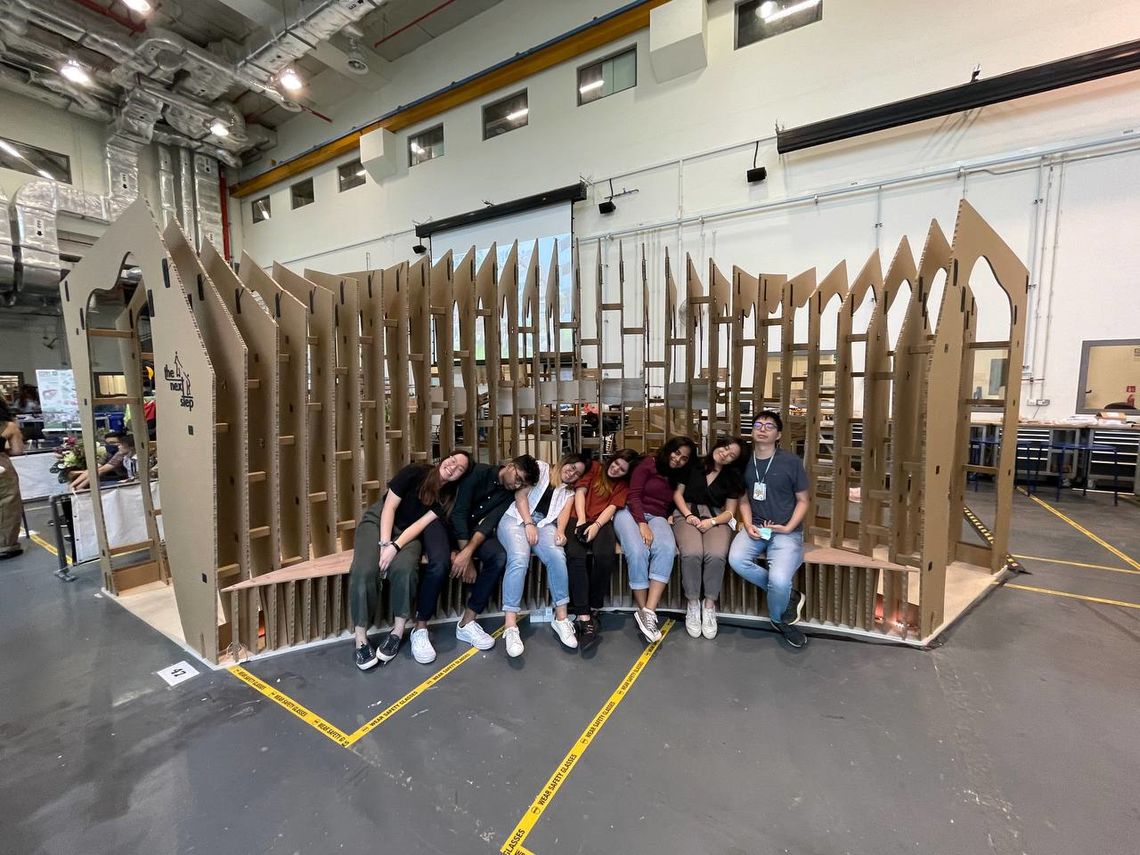
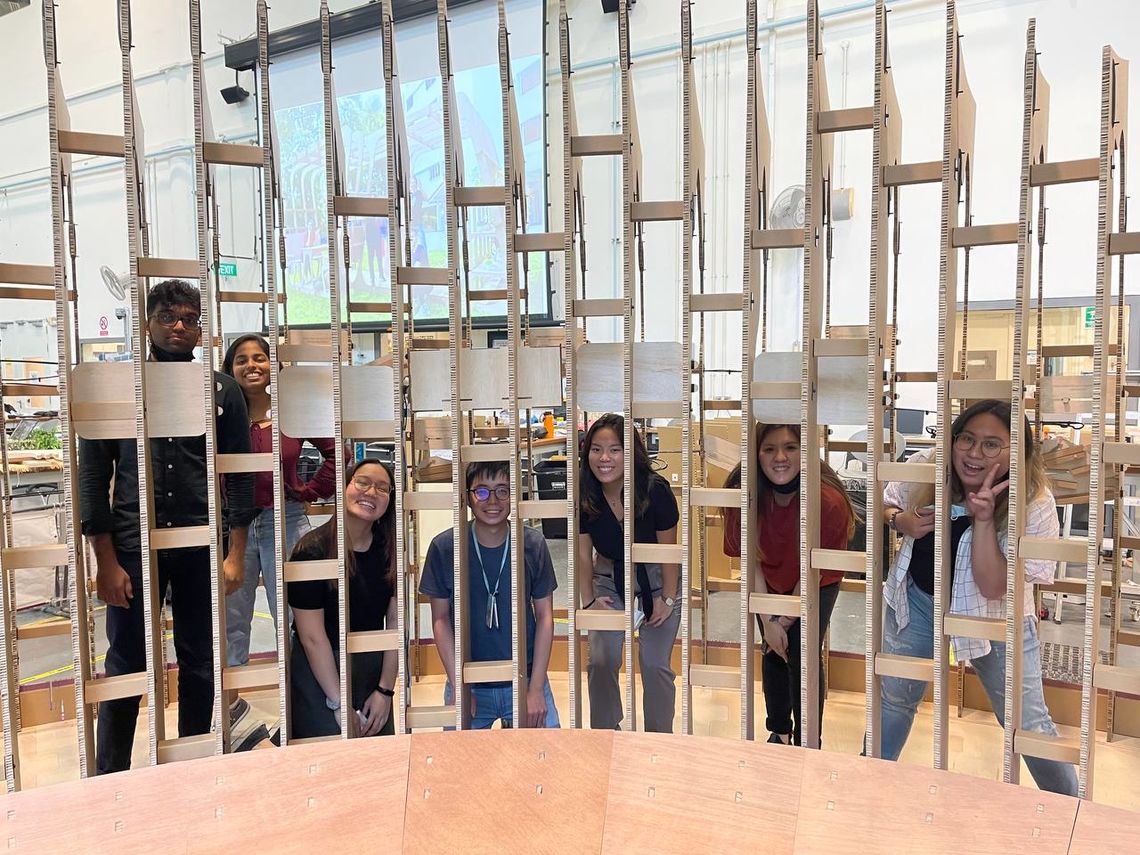
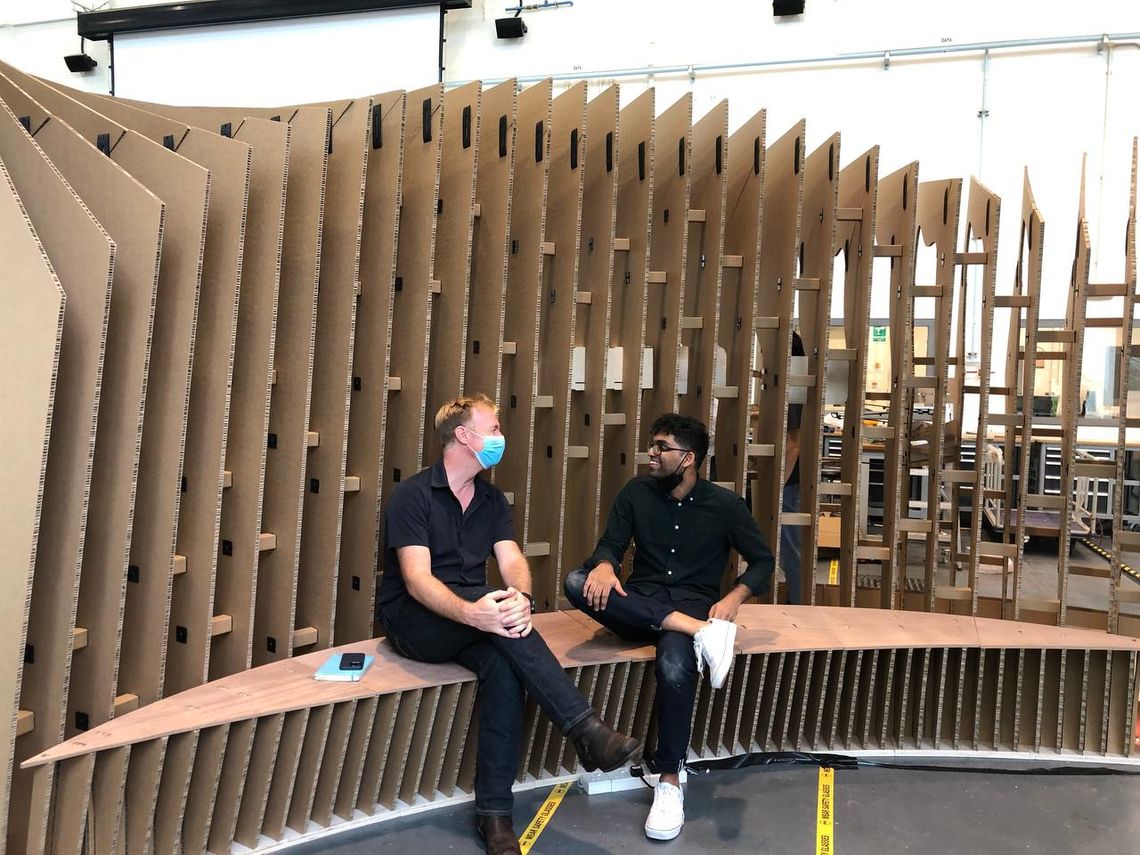
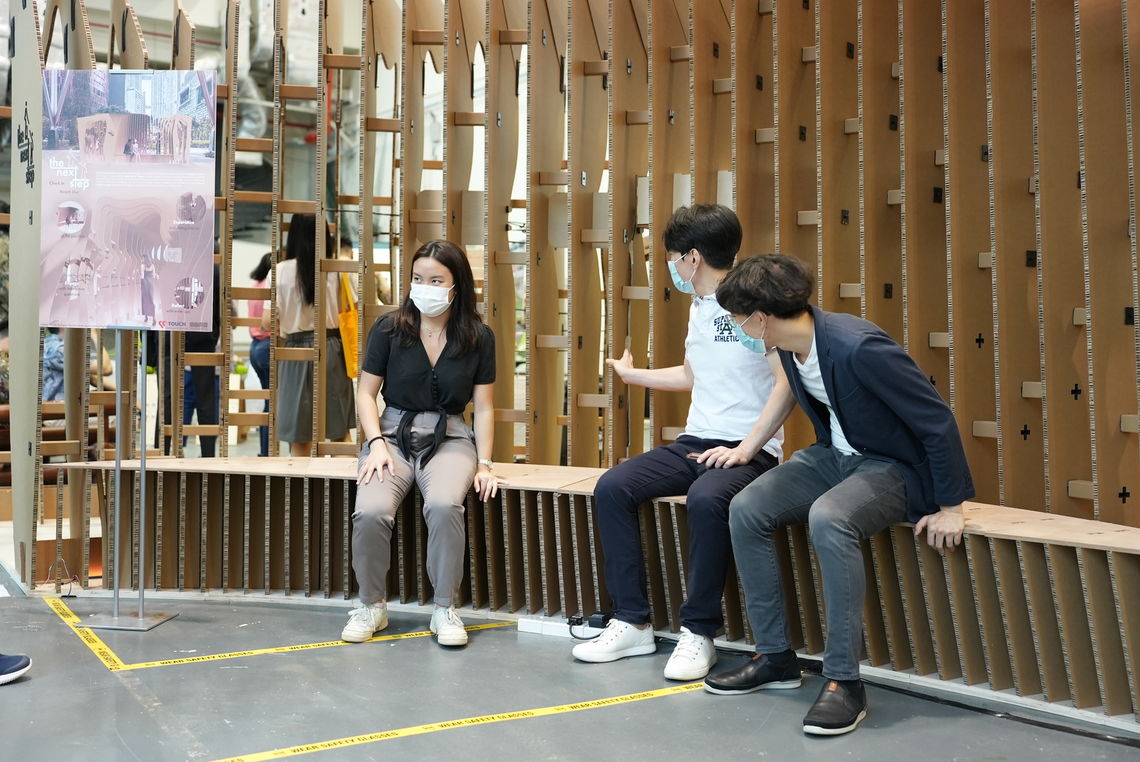
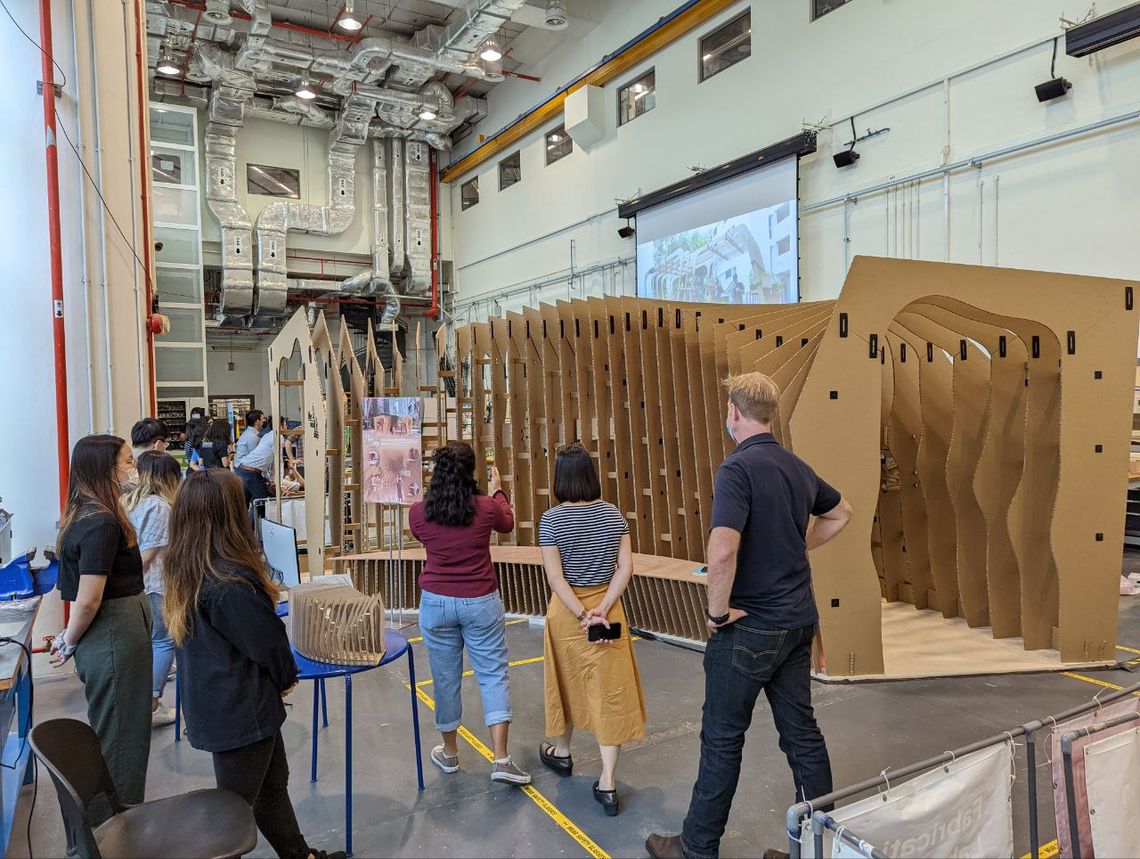

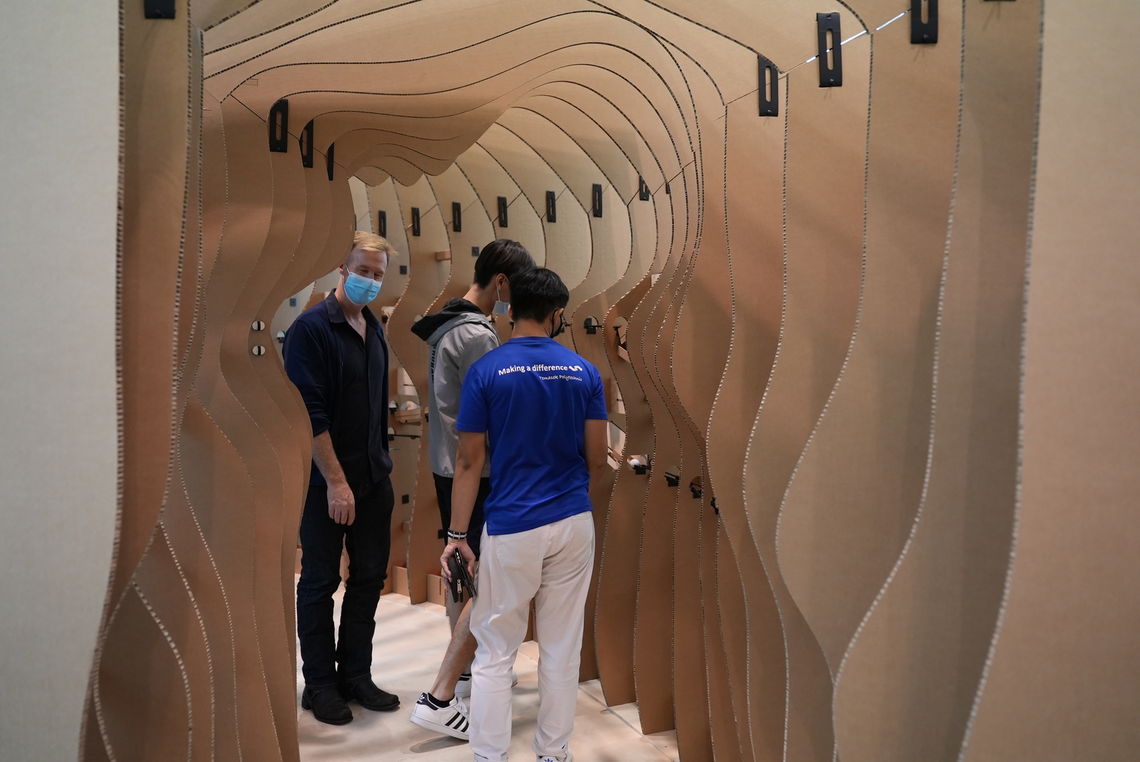

As users are guided through the undulating walls of the pavilion, they will be probed with thought-provoking questions through an interactive experience on one side of the pavilion wall.
As they trigger mechanisms to allow the ball to roll from one question to the next, the mechanisms and rail tracks slows down the process and the time in between the questions encourages reflection in the pavilion.

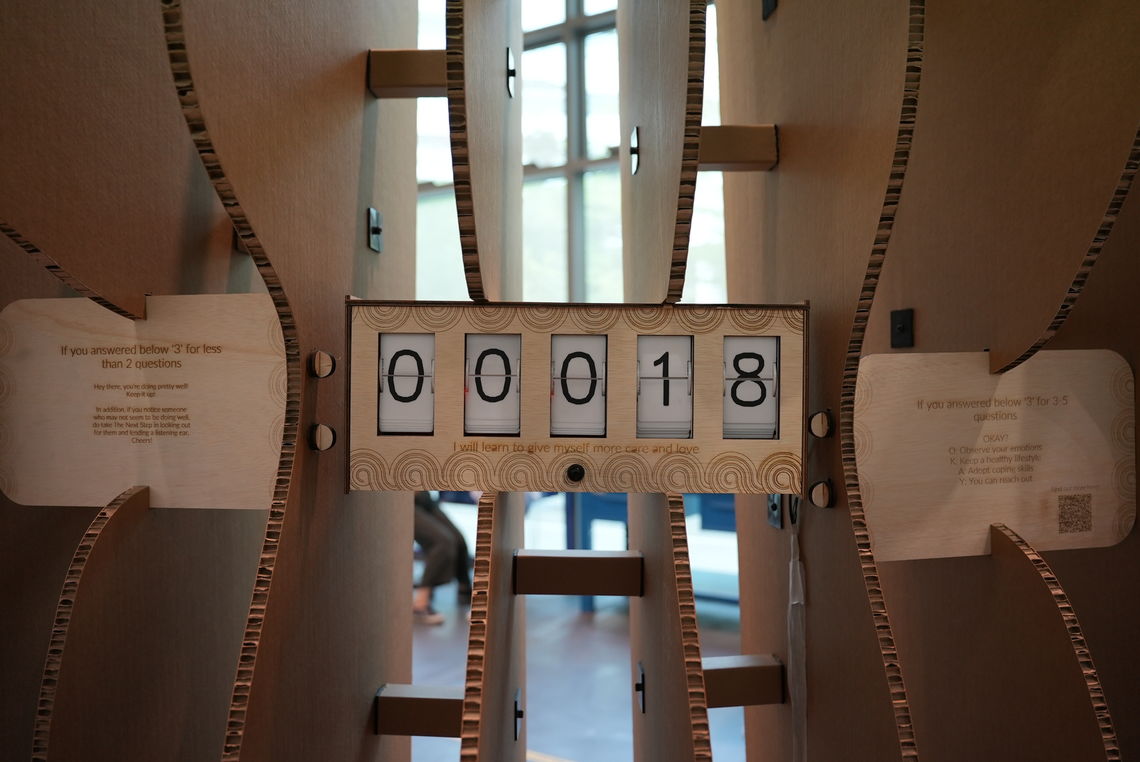
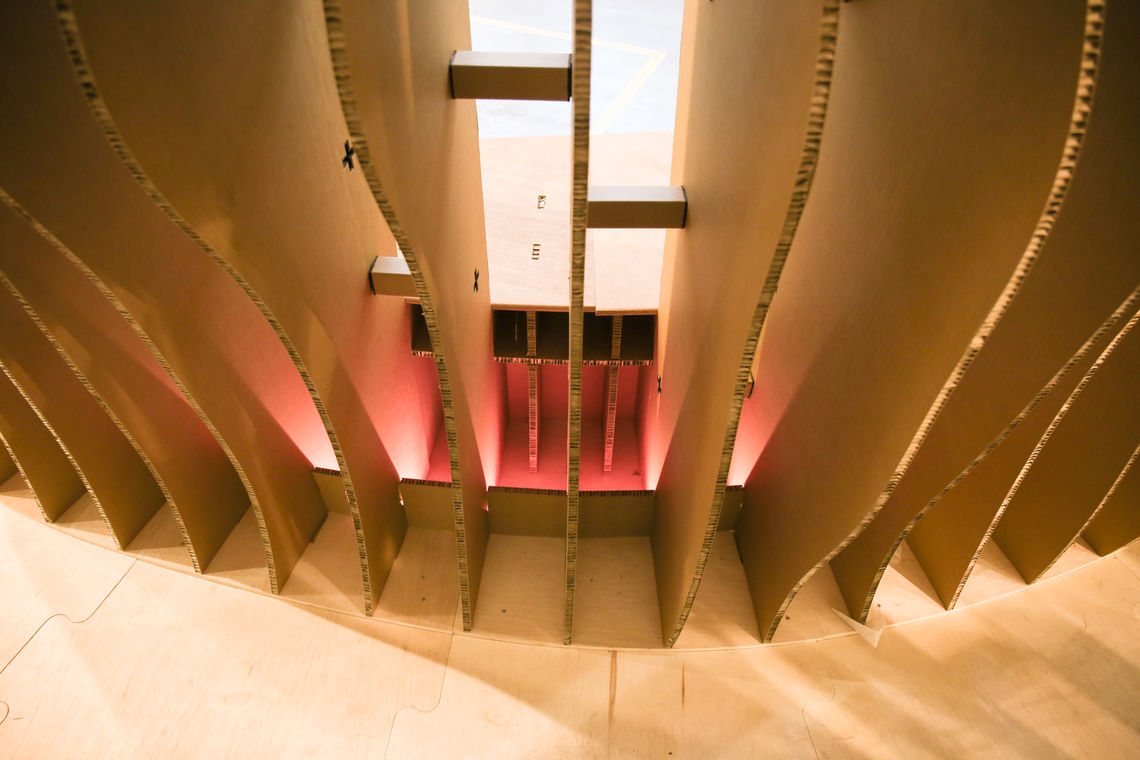
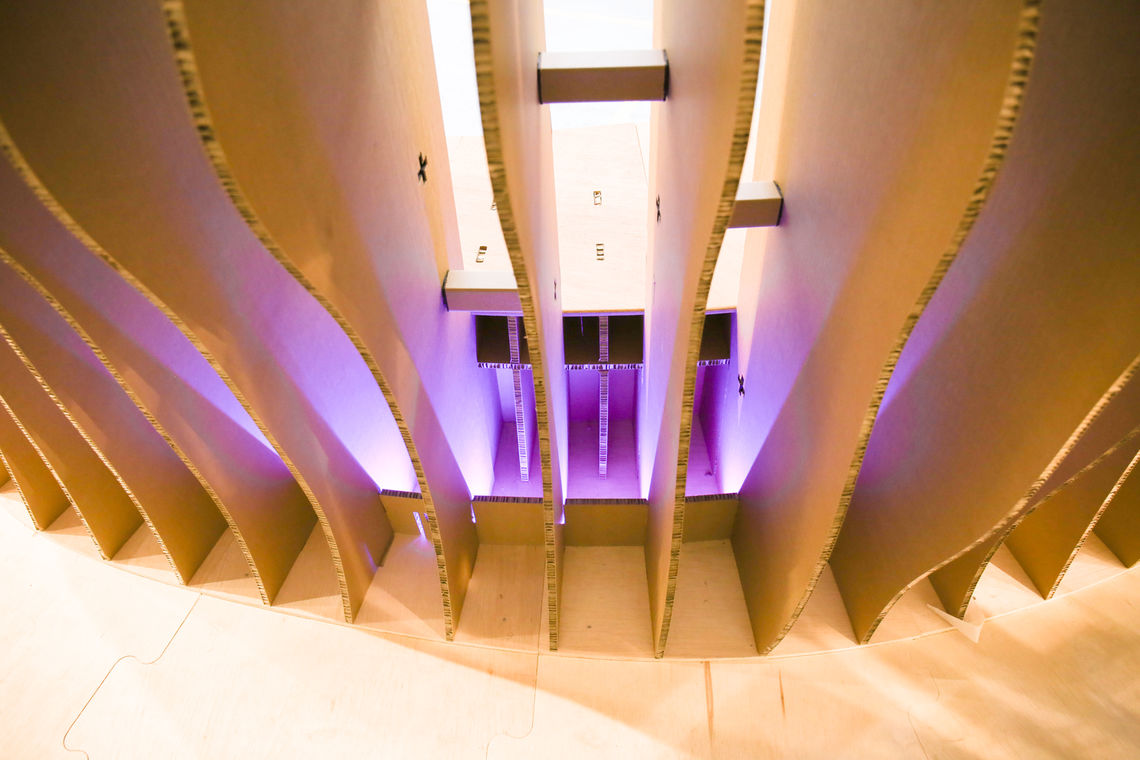
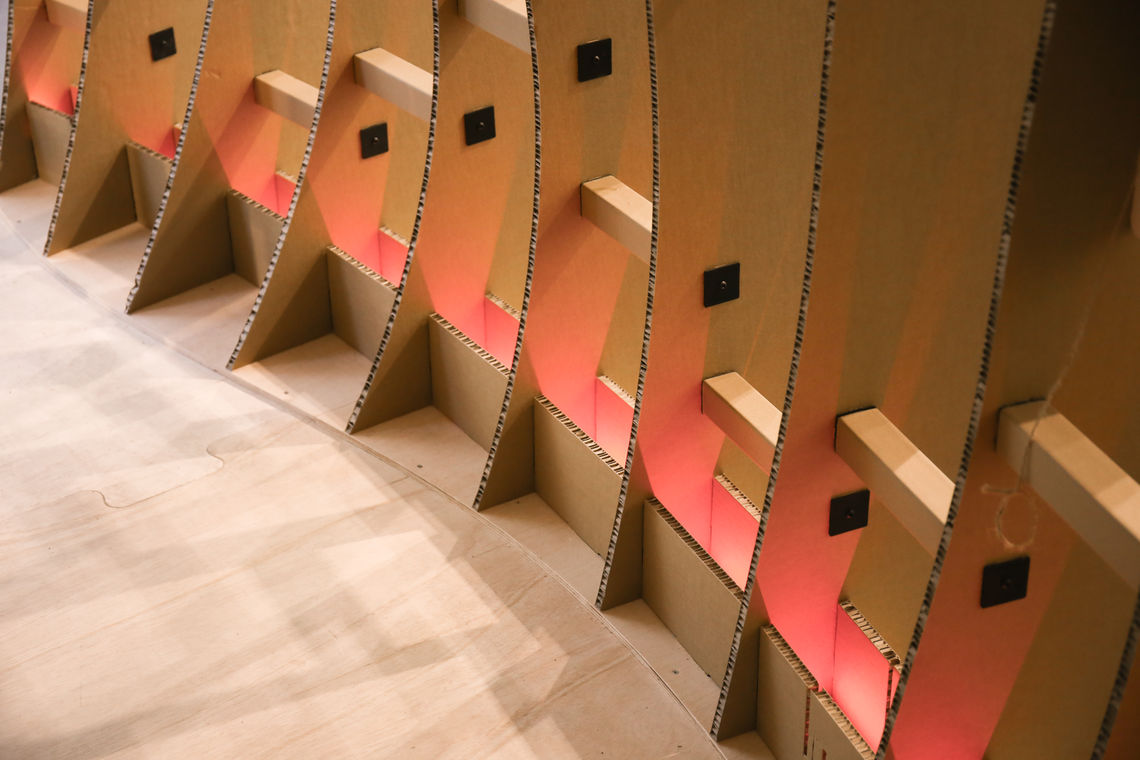
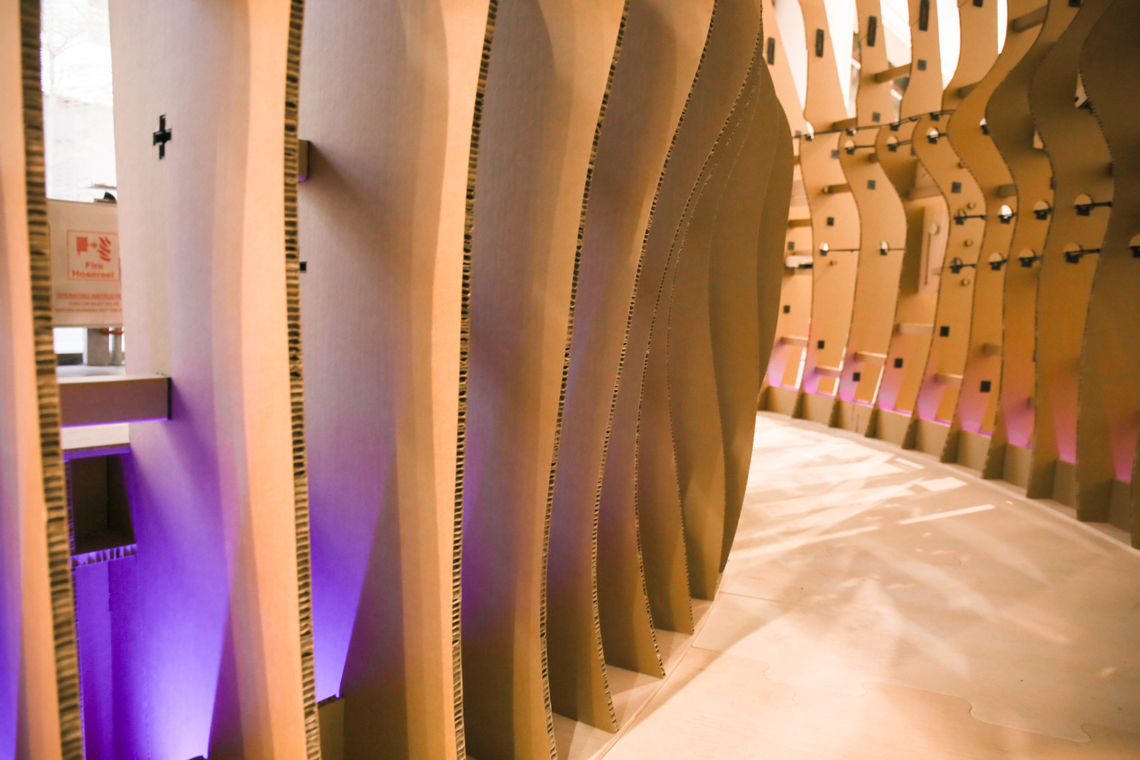
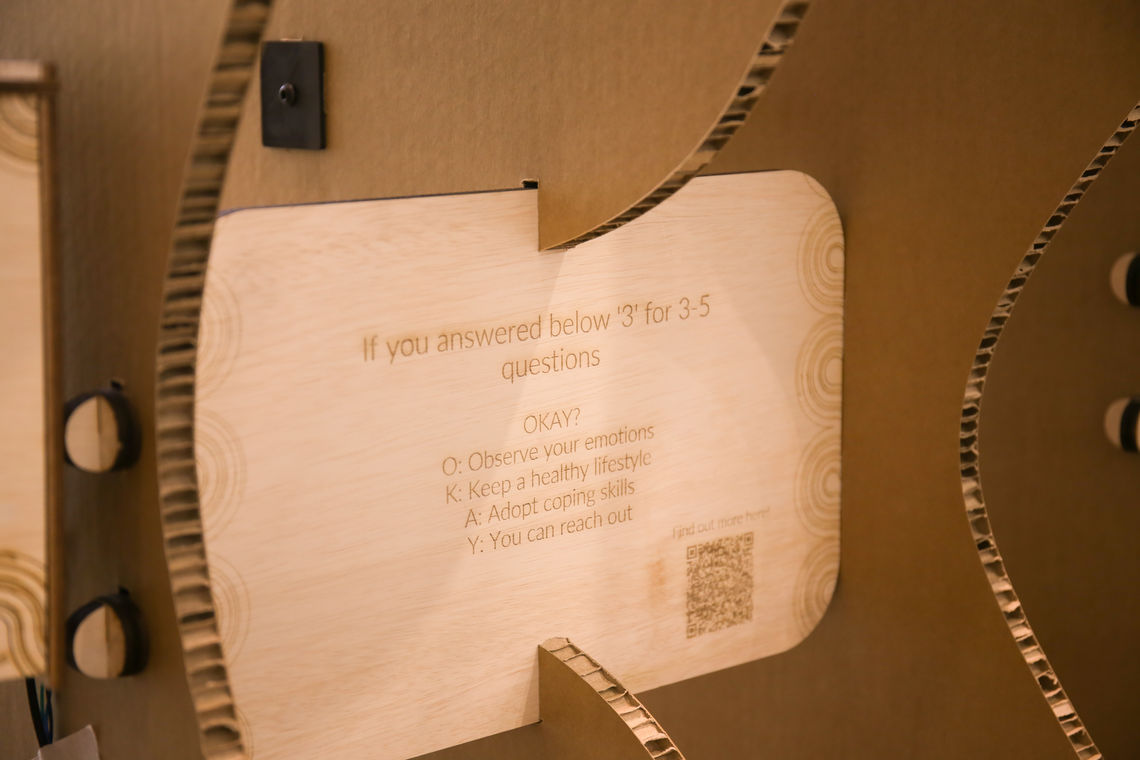
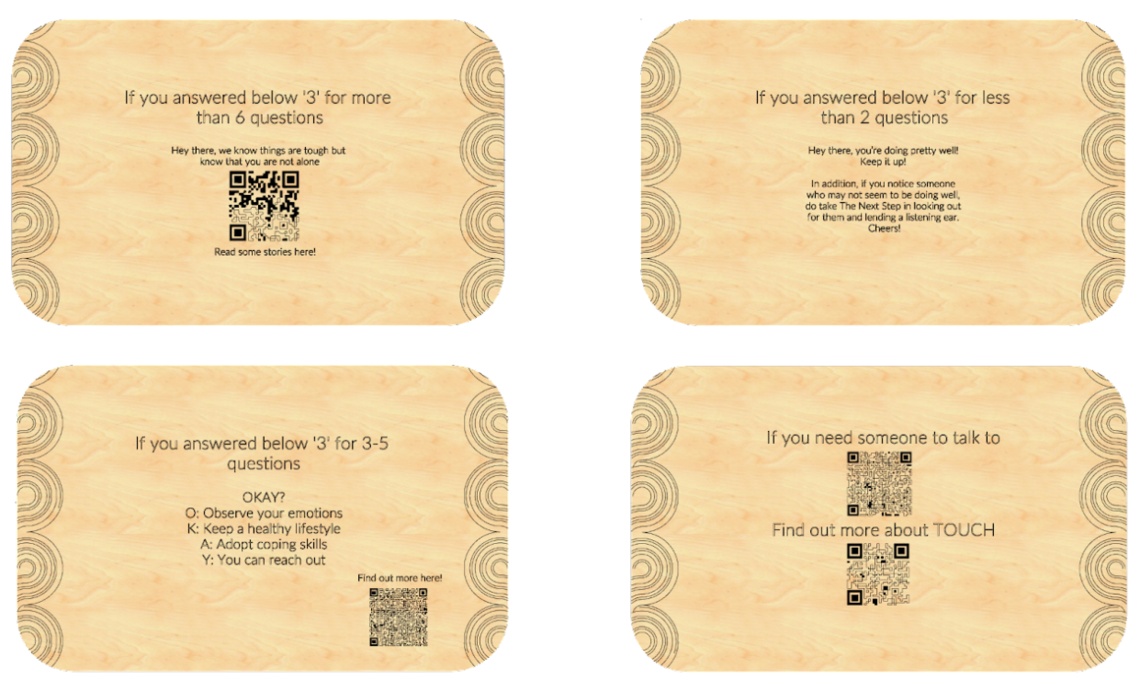
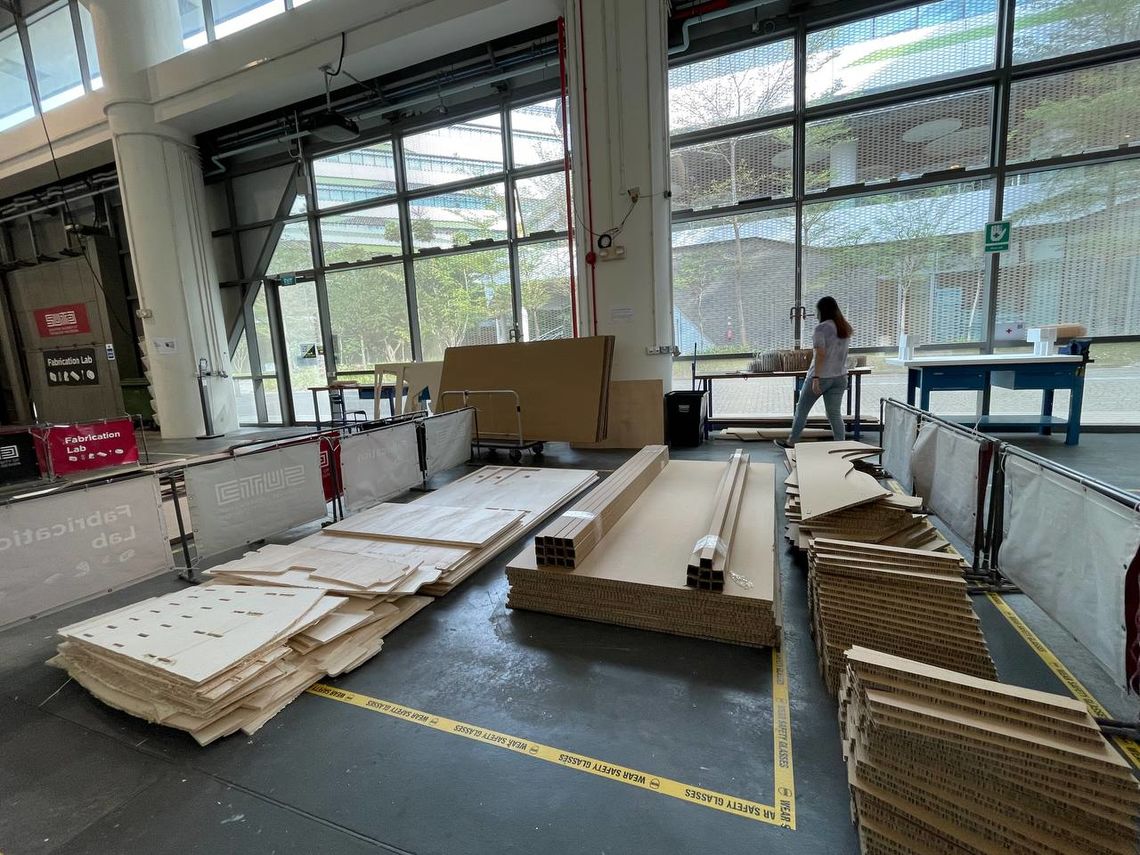


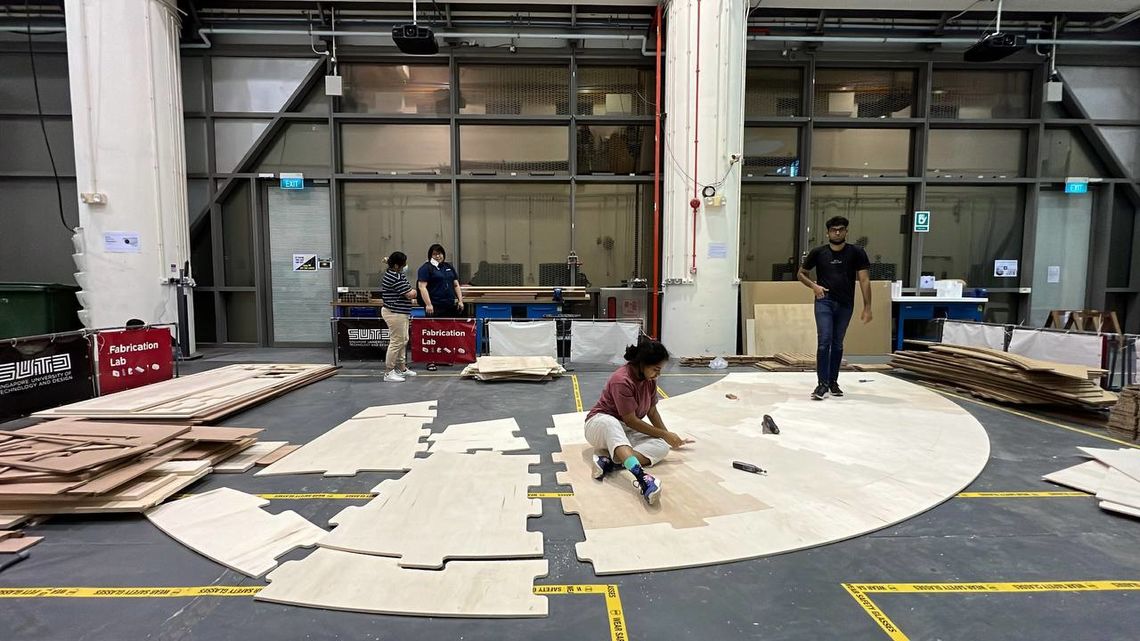
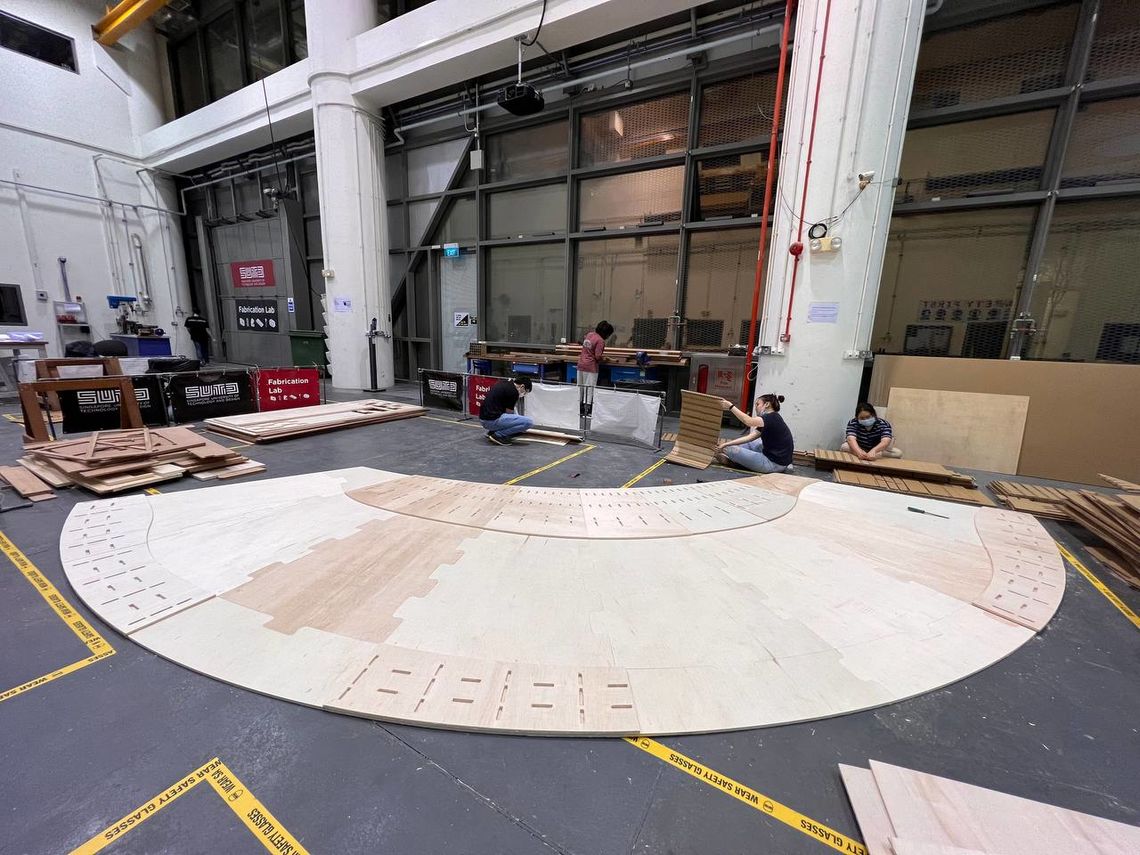
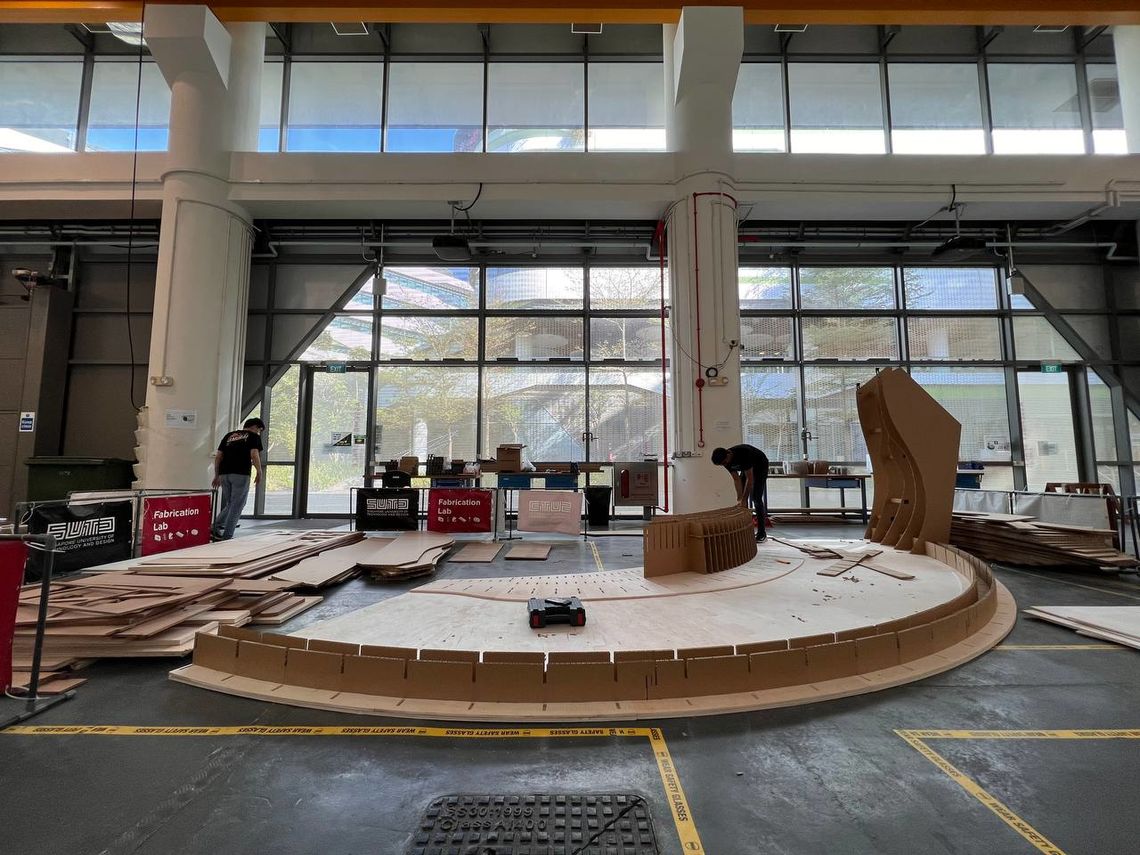

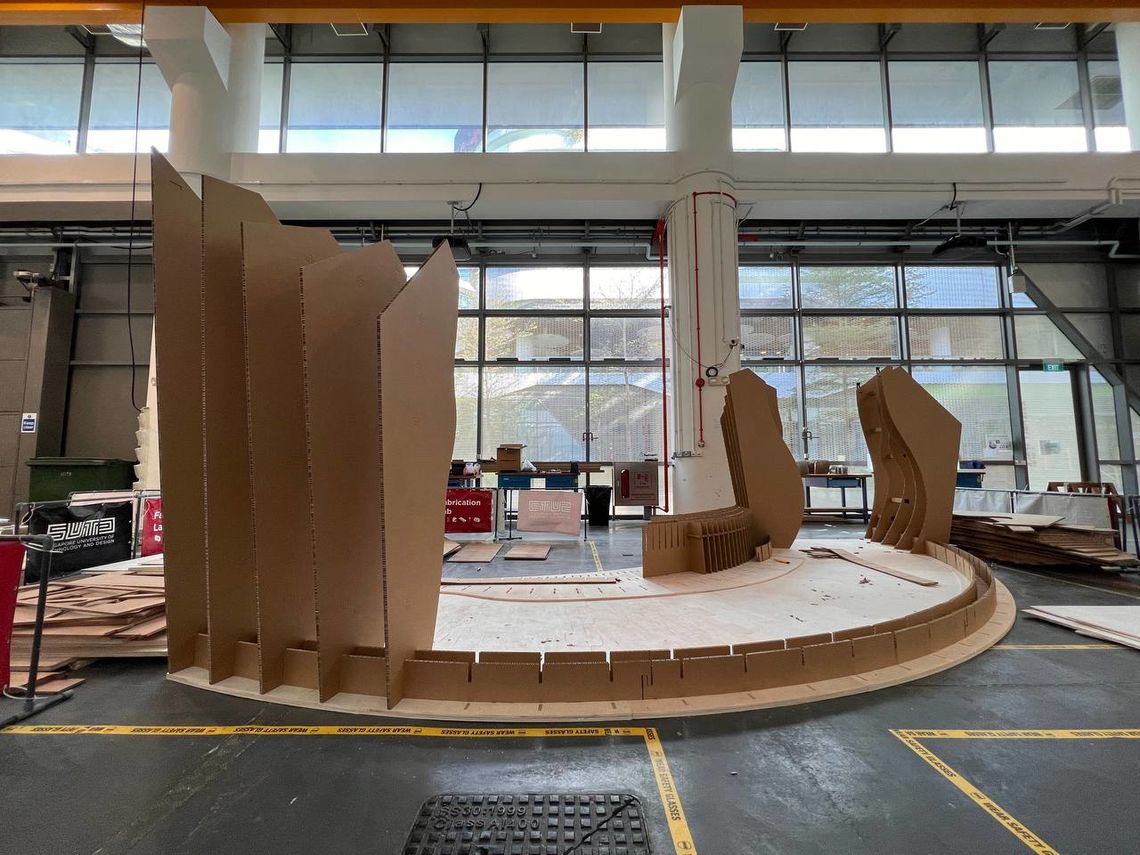
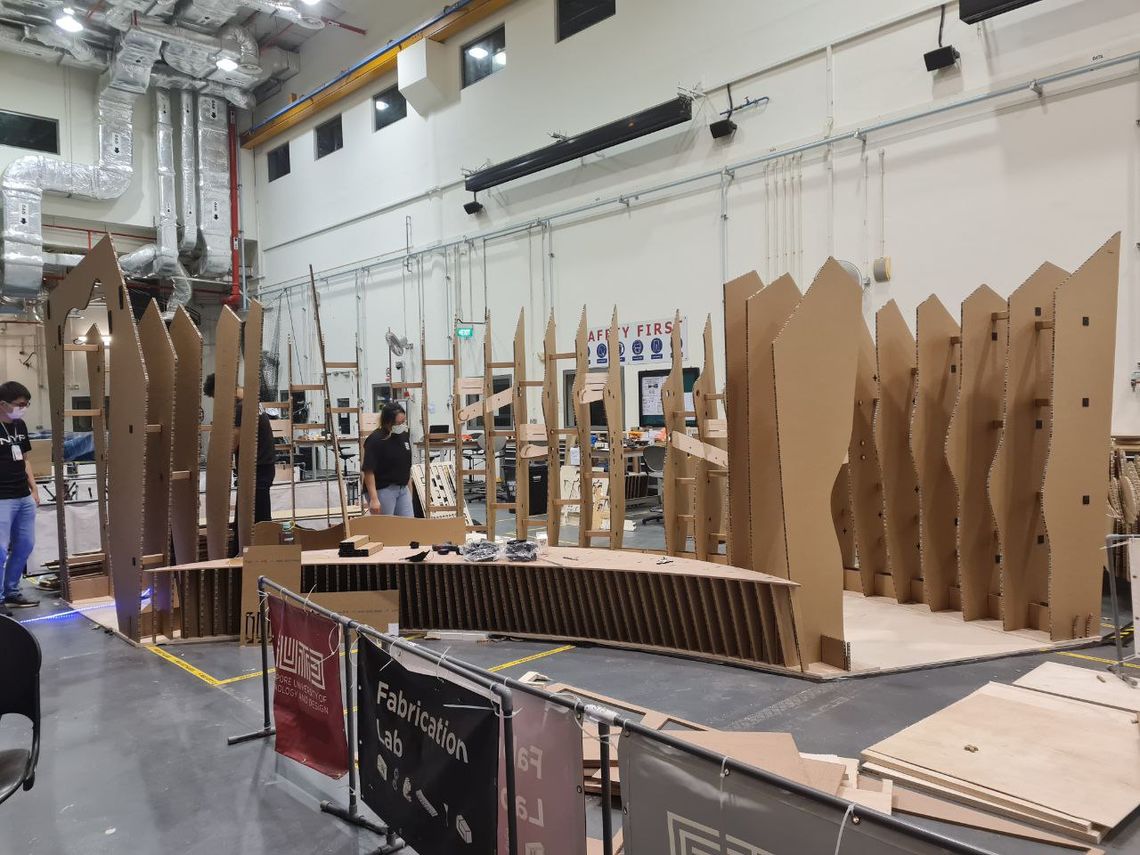
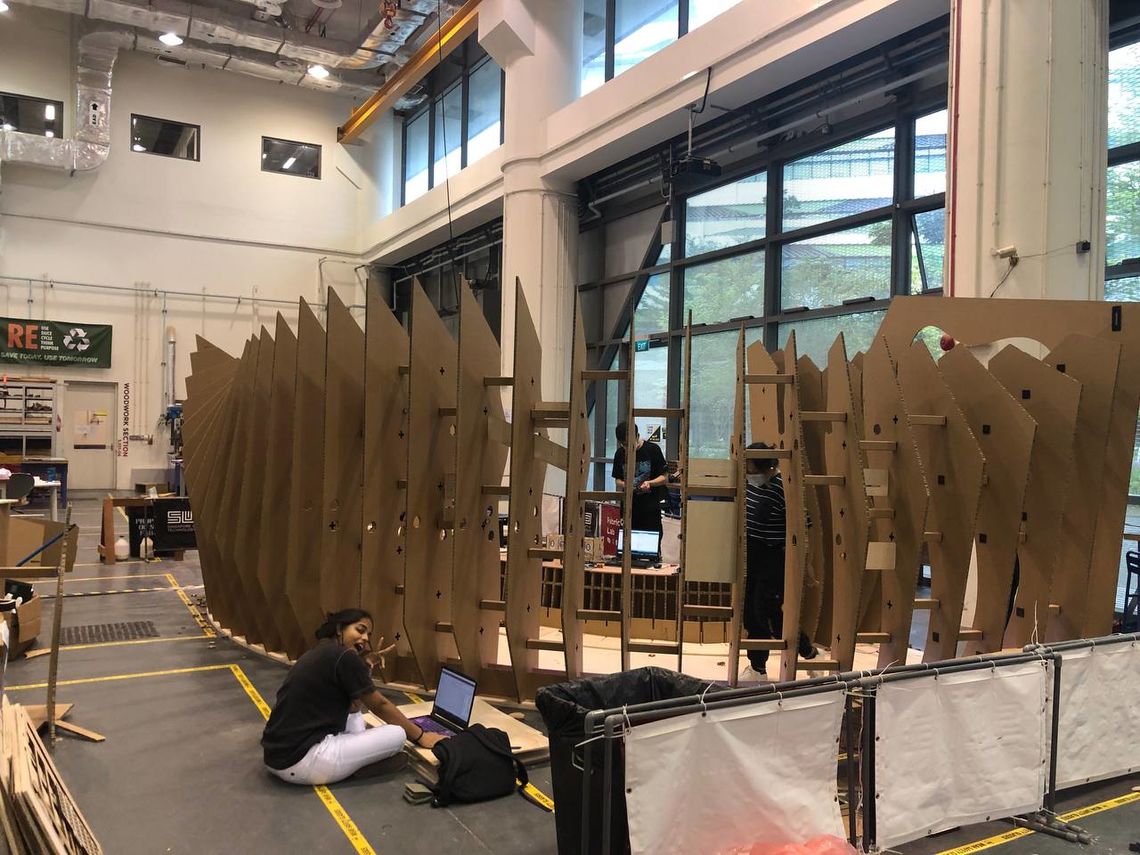
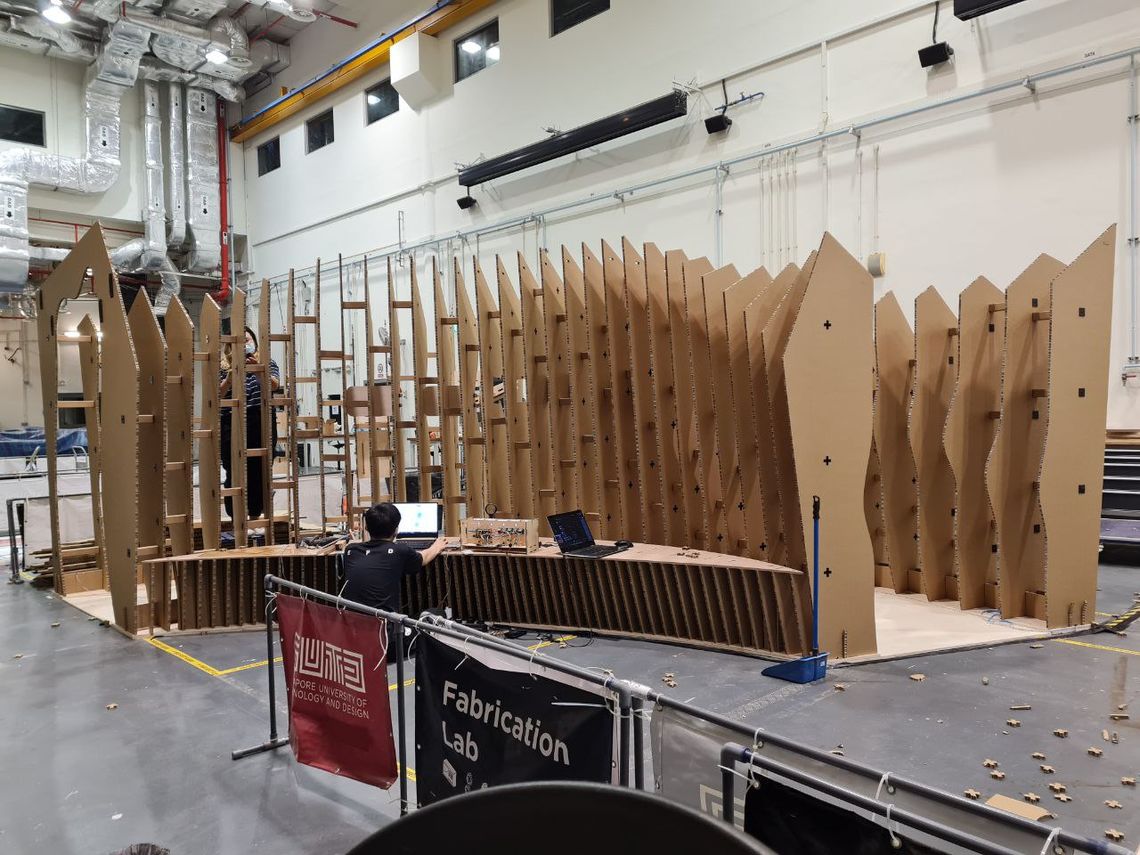

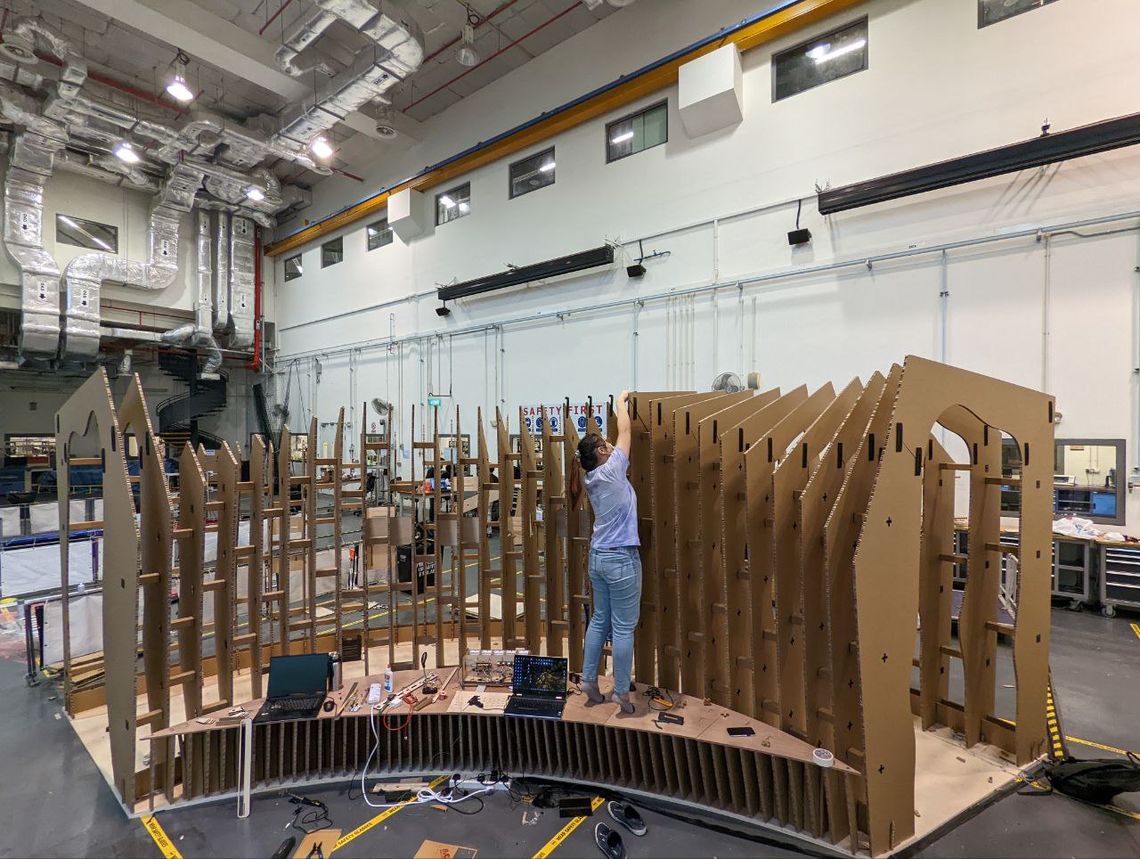
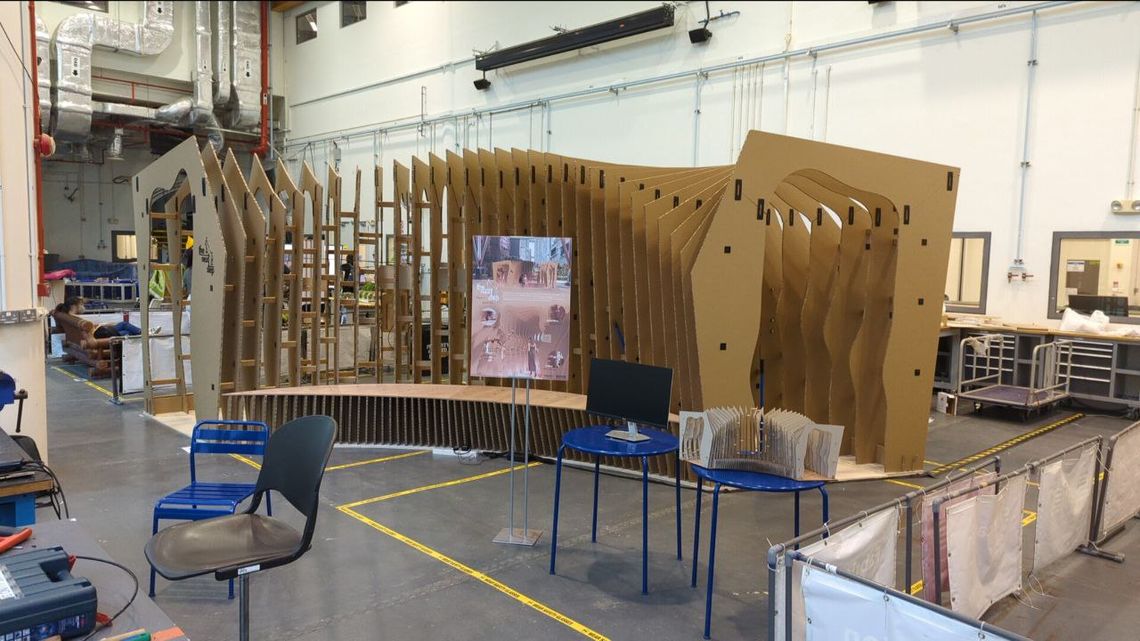
Discover stories about others' mental health journeys.
Sustaining mental well-being requires time and effort.
If you need someone to talk to:
Belle, the Beyond the Label helpbot
Find out more about TOUCH here.
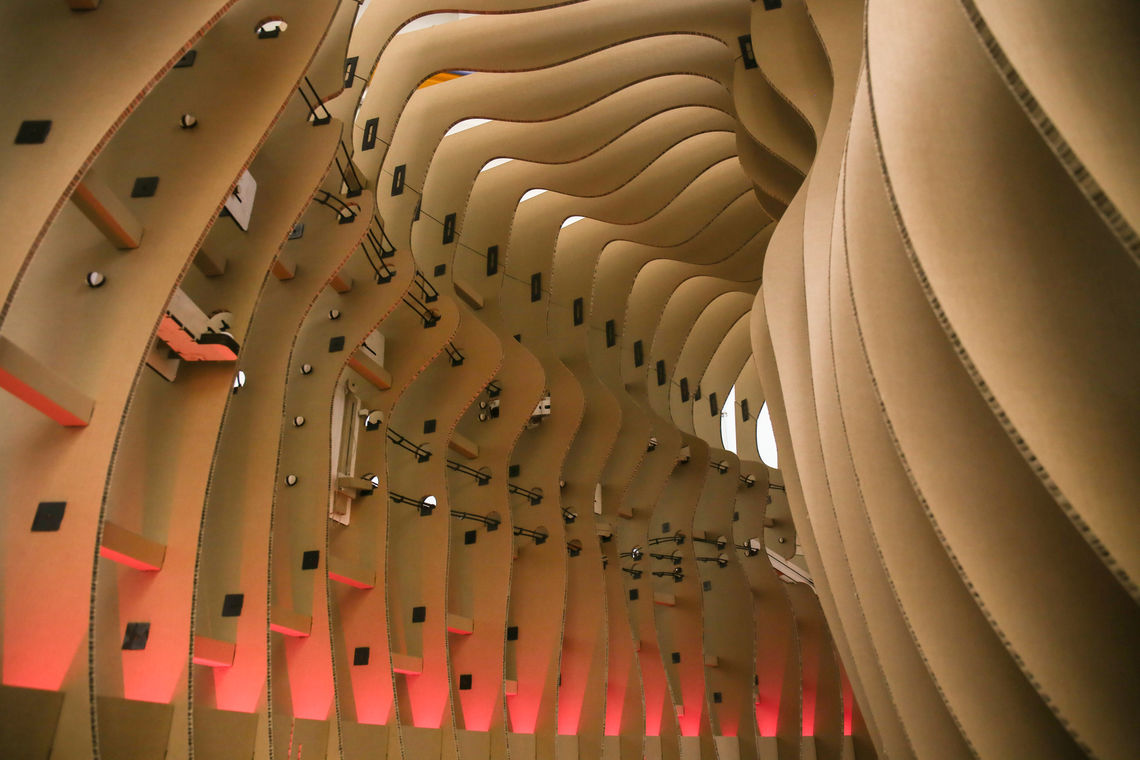
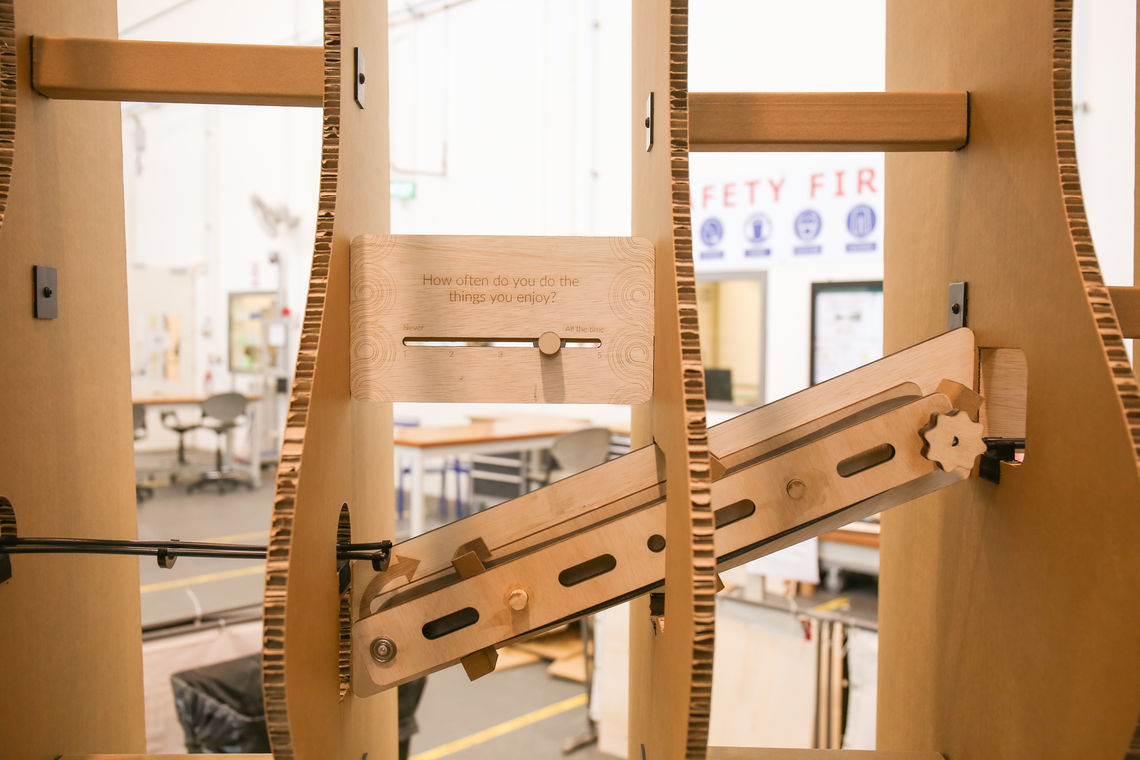
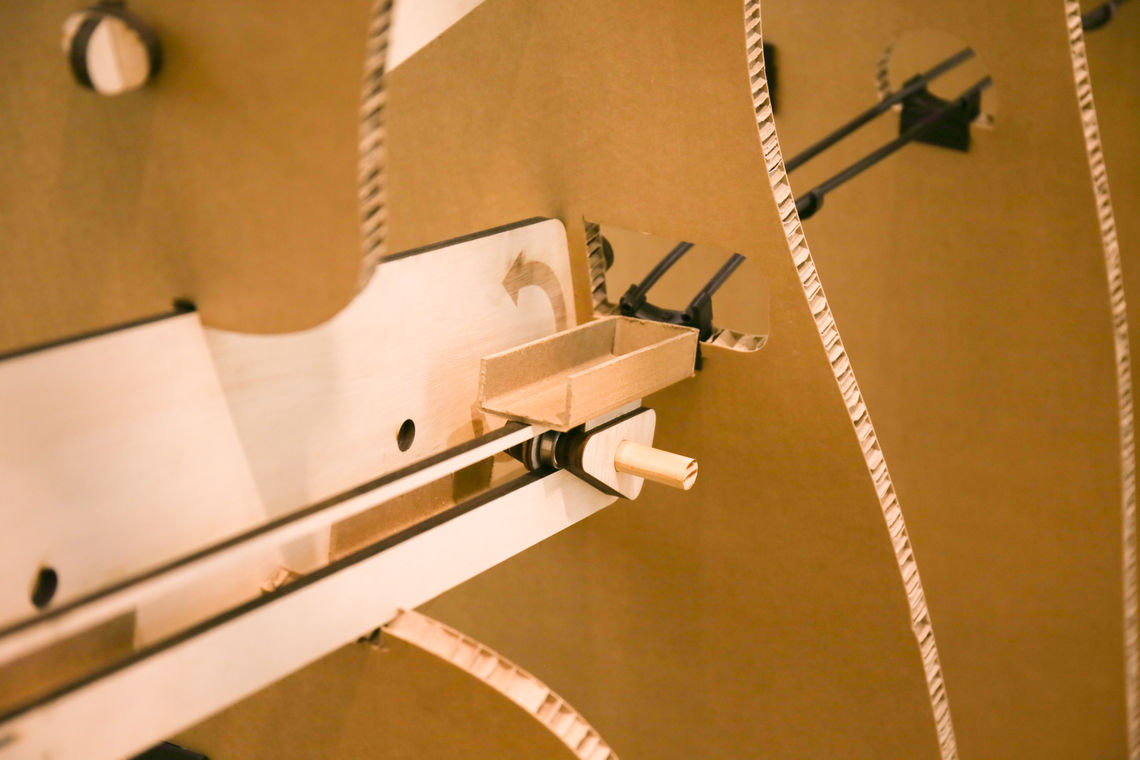

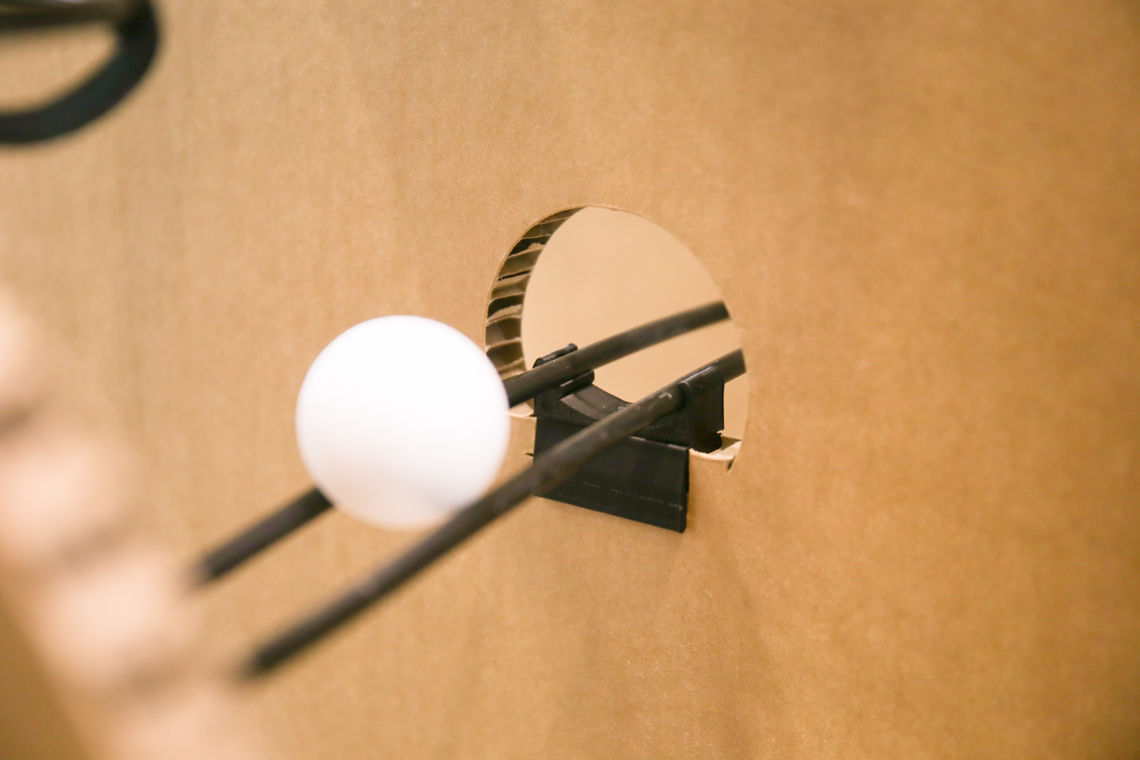

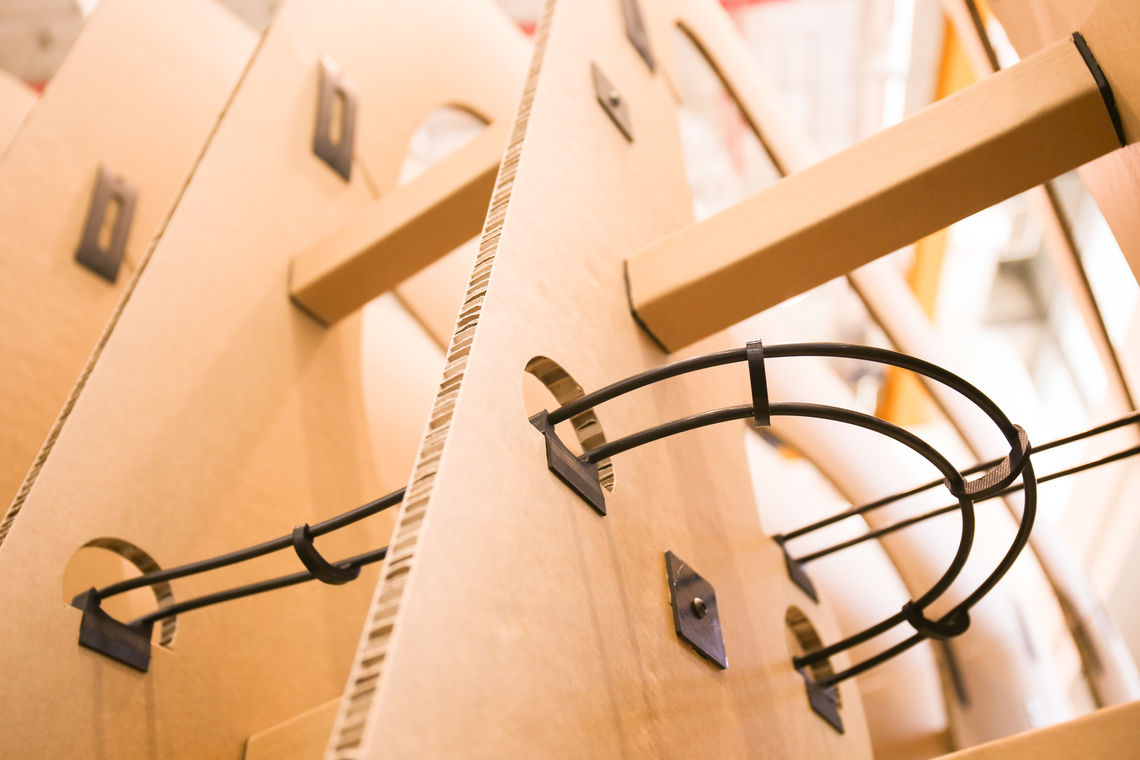
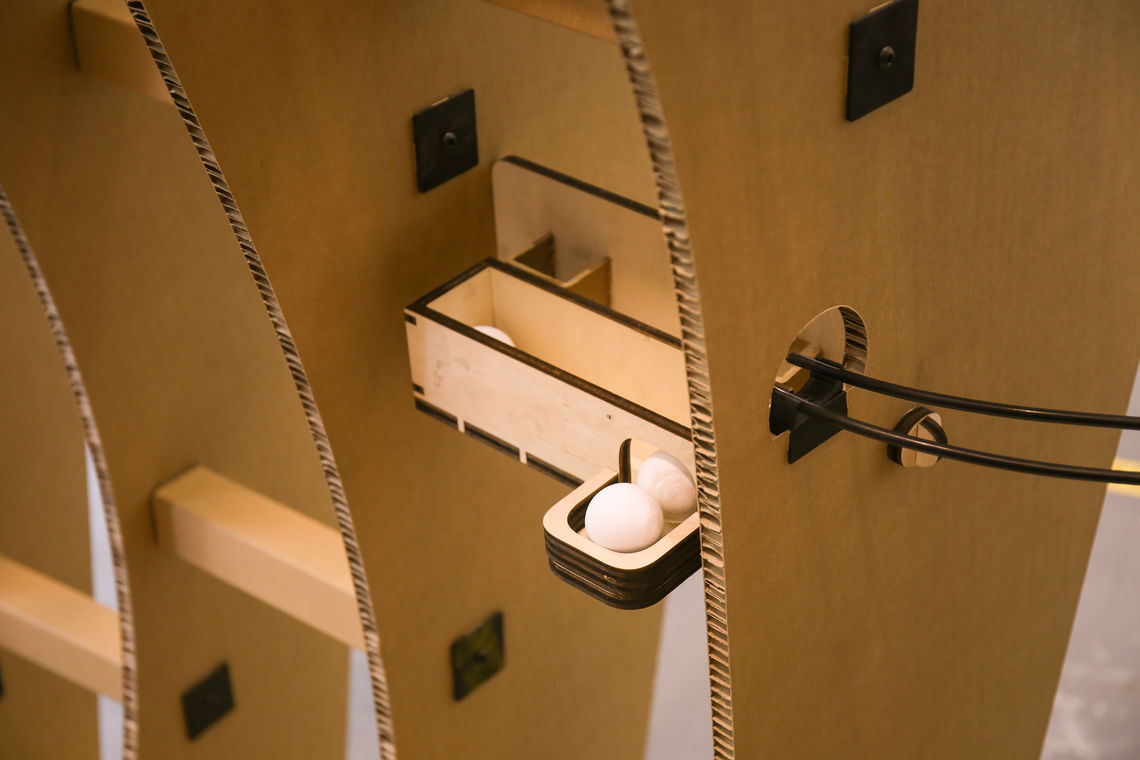
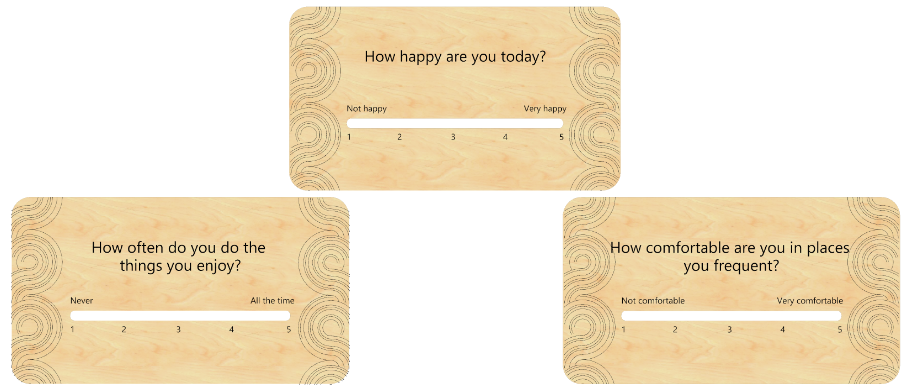
After the interactive experience, users can proceed to the other wall to obtain insights about the experience through write-ups, and gain access to stories about other individuals’ mental health journeys, and help resources available through the use of QR codes.
There is also a display where users can pledge to show more care and love to themselves. Upon pressing a button and pledging, the display would increase its count by one, and the lights running through the pavilion would change colour in celebration of the pledge.


 Aaron Soares
Architecture and Sustainable Design
Aaron Soares
Architecture and Sustainable Design
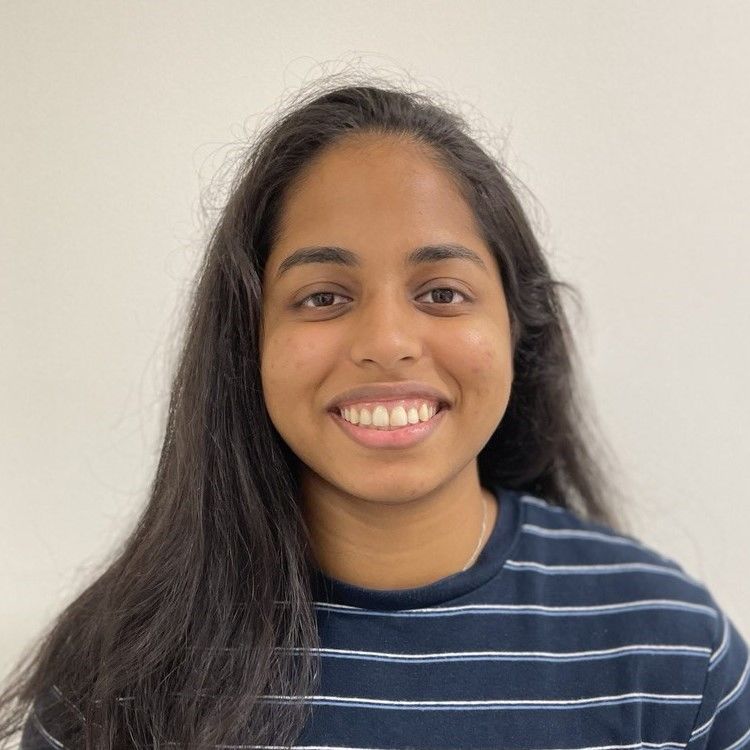 Ariyana Tiara Arnold
Architecture and Sustainable Design
Ariyana Tiara Arnold
Architecture and Sustainable Design
 Jane Phua Wen En
Architecture and Sustainable Design
Jane Phua Wen En
Architecture and Sustainable Design
 Wong Siong Min
Architecture and Sustainable Design
Wong Siong Min
Architecture and Sustainable Design
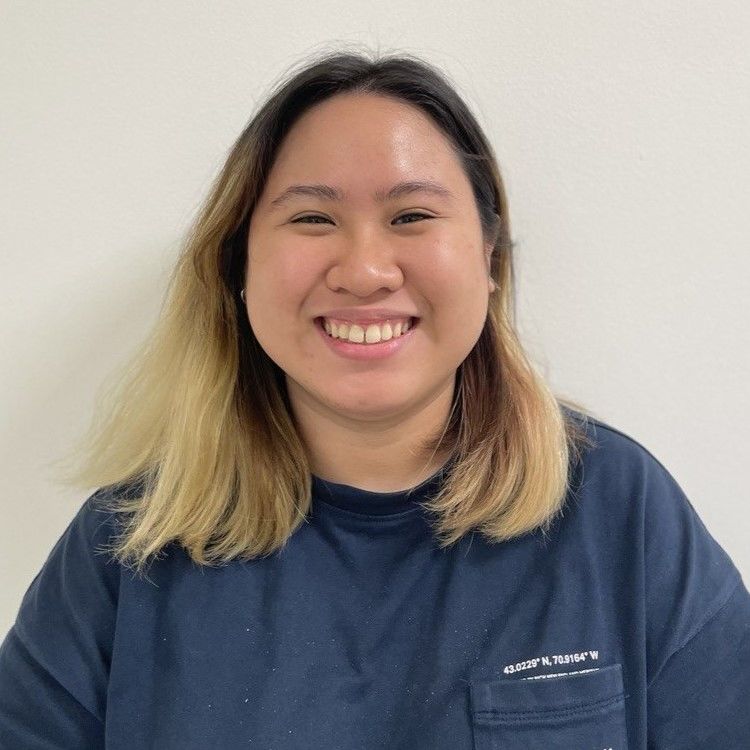 Liew Iris
Engineering Product Development
Liew Iris
Engineering Product Development
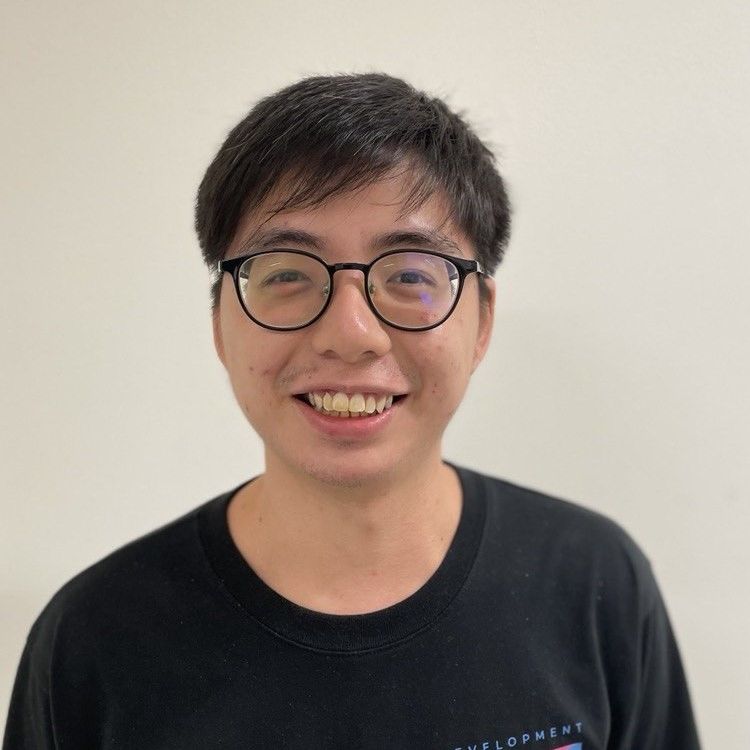 Ng Jiaxing Aaron
Engineering Product Development
Ng Jiaxing Aaron
Engineering Product Development
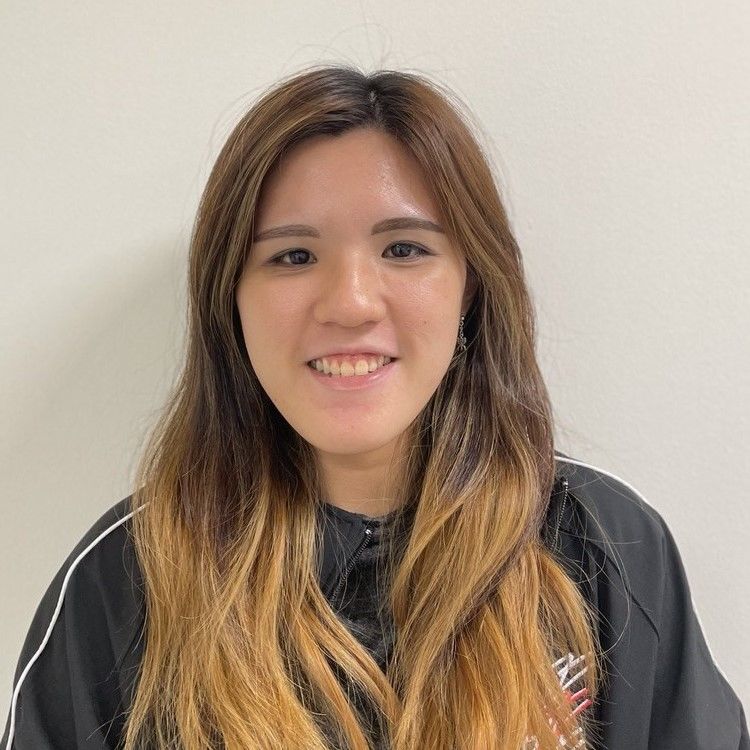 Ong Lok Hen
Engineering Systems and Design
Ong Lok Hen
Engineering Systems and Design

Aaron Soares
Architecture and Sustainable Design

Ariyana Tiara Arnold
Architecture and Sustainable Design

Jane Phua Wen En
Architecture and Sustainable Design

Wong Siong Min
Architecture and Sustainable Design

Liew Iris
Engineering Product Development

Ng Jiaxing Aaron
Engineering Product Development

Ong Lok Hen
Engineering Systems and Design
© 2022 SUTD

